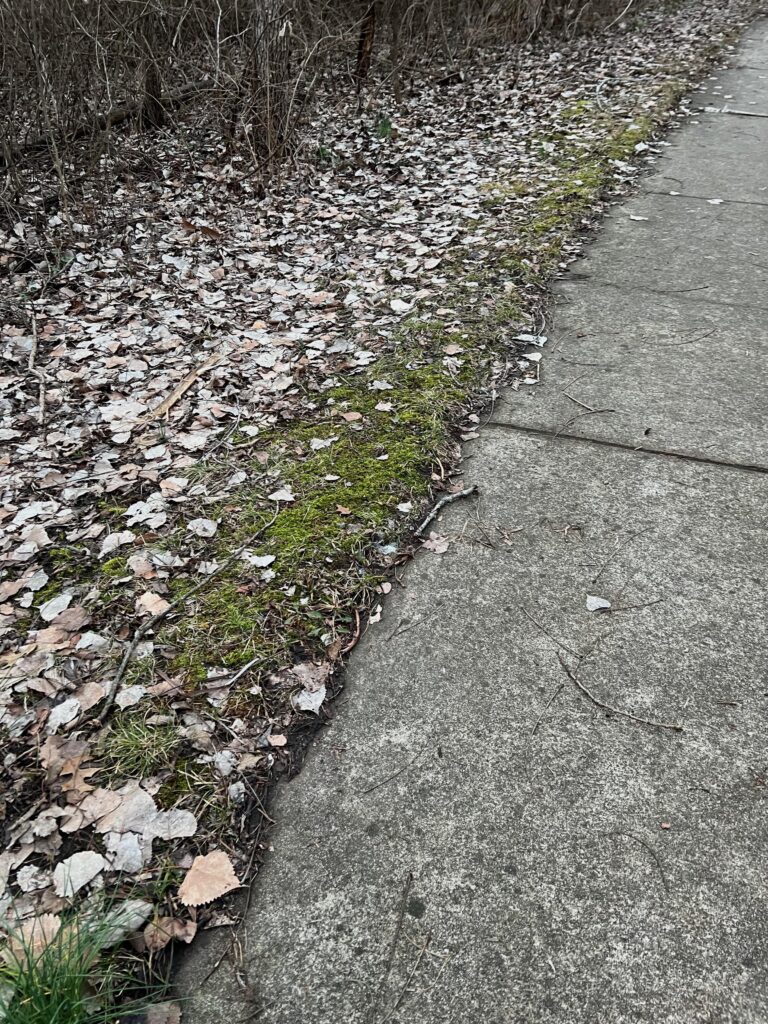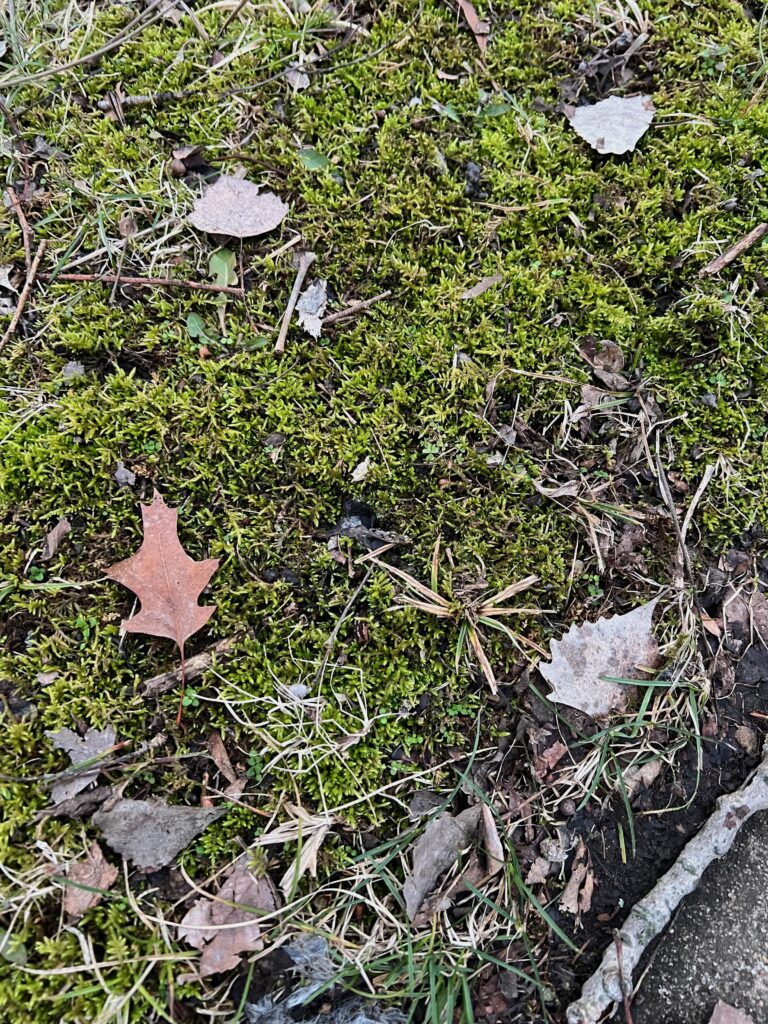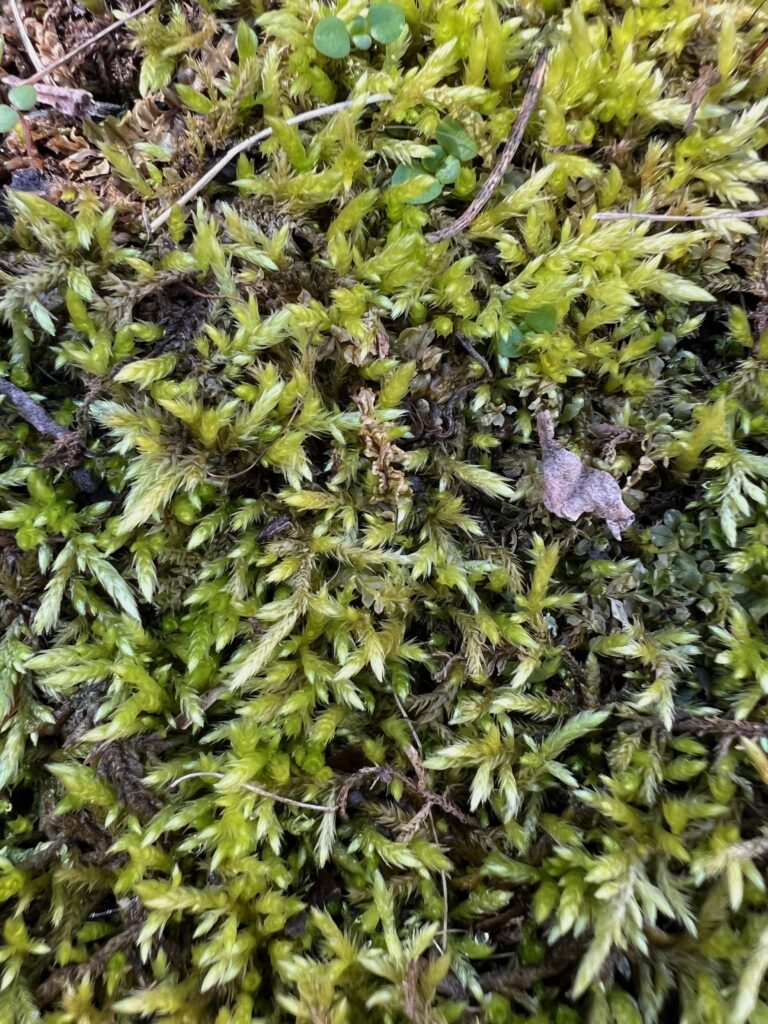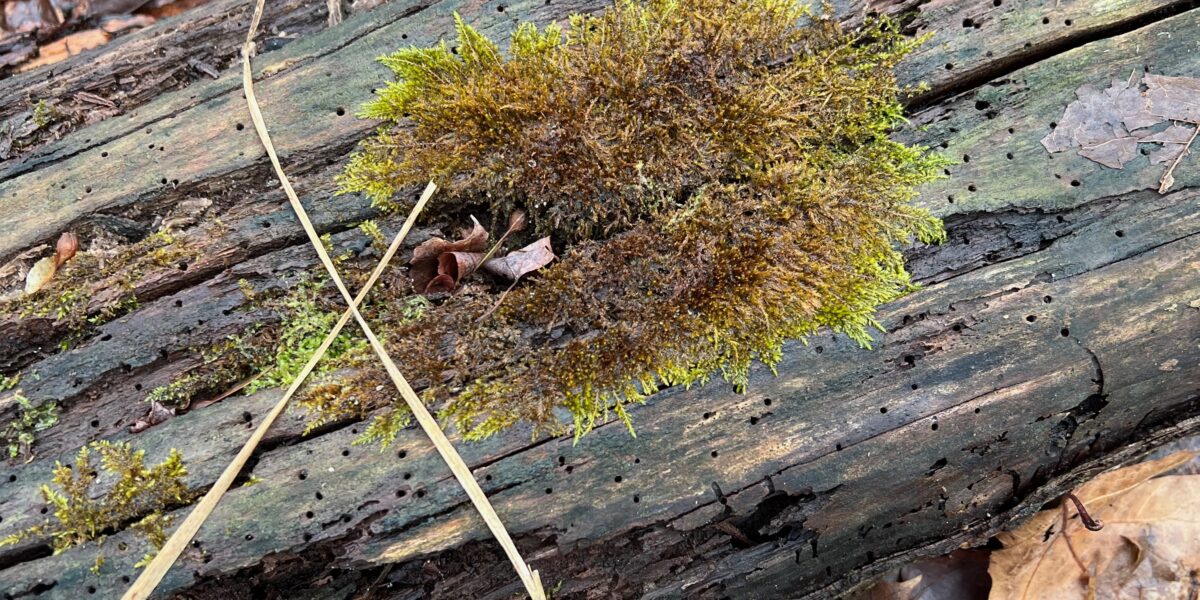Resources and suggestions for identifying your moss
It is always difficult to suggest the most effective or optimal path to moss identification for someone just getting started. I started down this path a few years ago and I still consider myself a bryophyte neophyte. I have quite a bit of empathy for folks who are just getting started with this challenge and make no mistake, it is a challenge. One reason that I did not pursue moss identification earlier in my career is that resources were generally scarce for KS mosses and mostly restricted to a few keys, with minimal illustrations. The web has changed that. Beginners, today, can begin their moss exploration with the help of incredible resources–many of them free and online. Realize that there are only a few, mostly outdated resources specific to Kansas but don’t let that stop you from accessing resources focused on other areas in the country. Likely, they’ll still be relevant to Kansas moss searches. The major difference is that there are probably only about 130-150 moss species in KS (maybe more) while in New York there may be more than that in a couple of square miles in the right habitat. By looking at mosses that have been collected in the state and comparing them to resources like Northern Forest Atlas Digital Atlas of mosses, I find most of the mosses from KS also occur in the eastern part of the country which is the focus of many of the resources. Let’s cover some of those resources.
Web resources:
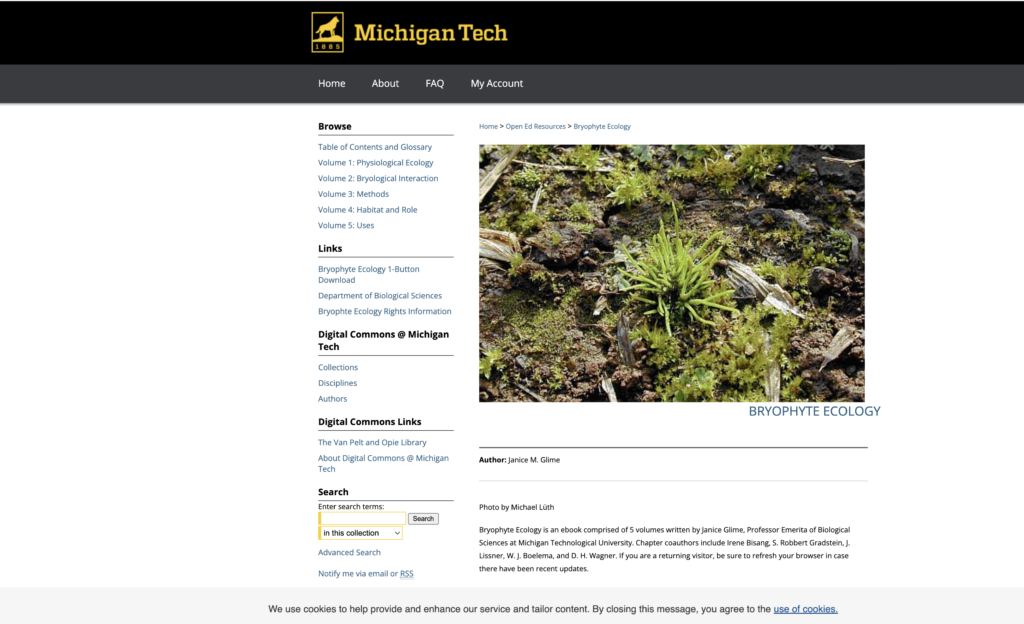
Bryophyte Ecology Janice Glime has put together, years of posts from a bryophyte listserv and created a reference unlike any other. It is a rich resource not only on moss ecology but also on techniques for collecting, microscopy and such. There is not a chapter on moss identification. Highly recommended
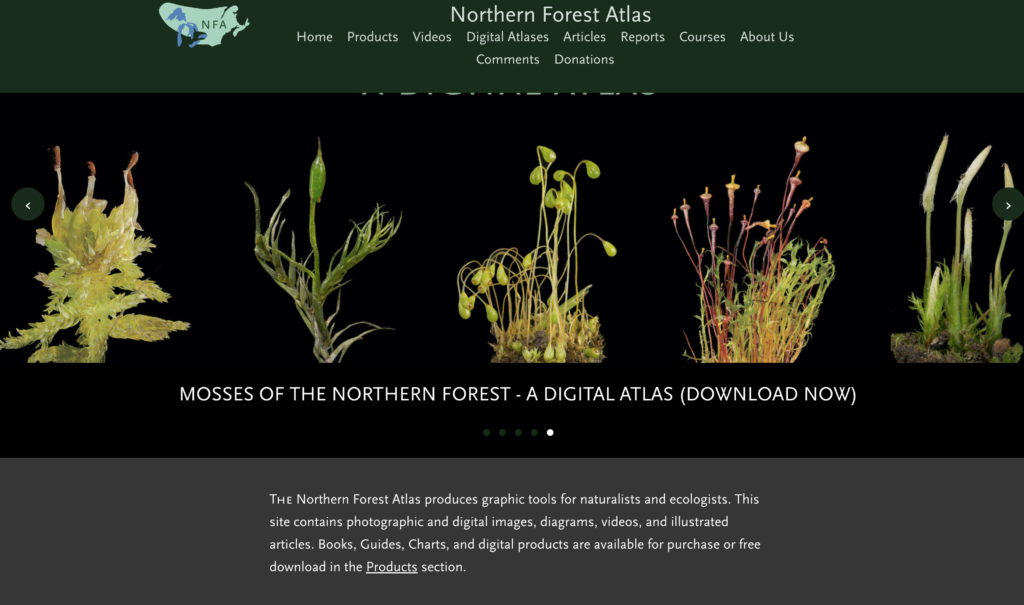
Northern Forest Atlas This site is where you can find a lot of Jerry Jenkins’s work on moss in the New England/Adirondack area of the country. All of the online materials are free to use. These include large posters to help work up a possible identification, incredible catalogs of high-resolution images of hundreds of mosses (hydrated and dehydrated), moss lessons that help one to “see” mosses in their habitat, videos, and workshops. Highly recommended.
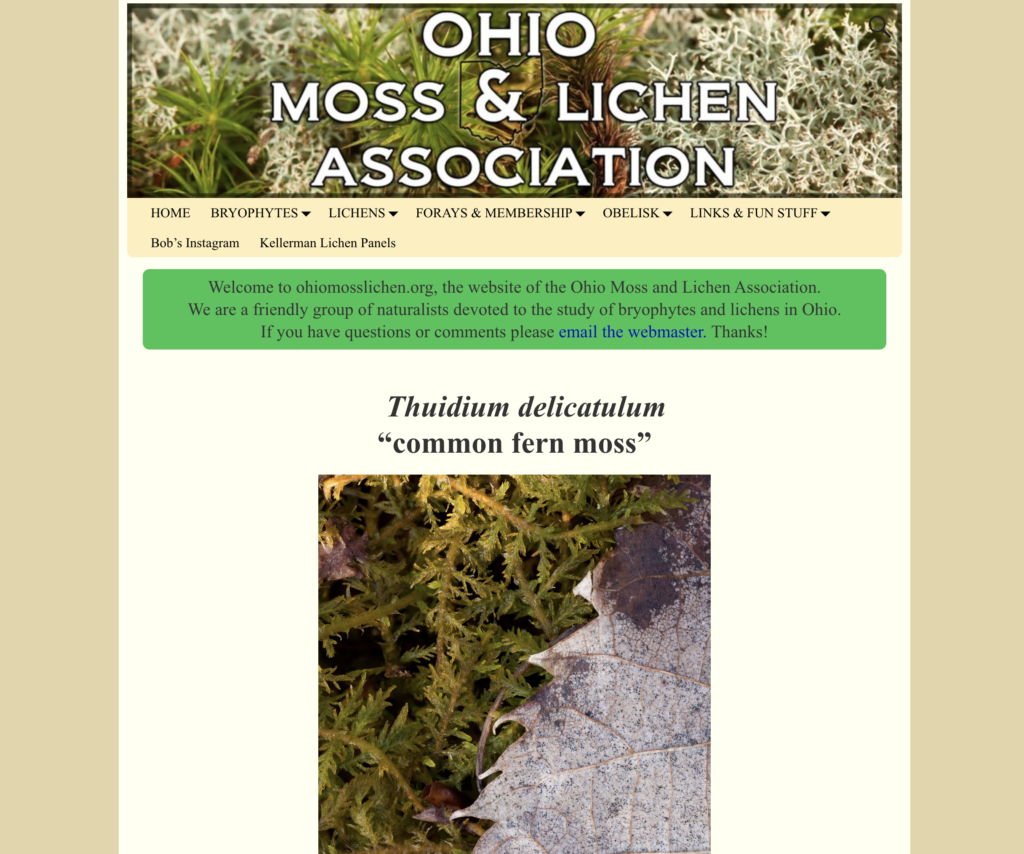
Ohio Moss and Lichen Association Once I have a possible name, this is one of the sites I go to to view micrographs of moss leaves and more thorough descriptions of the moss habitat. It is not a comprehensive site but does feature a lot of common mosses that occur in Ohio and also in KS.
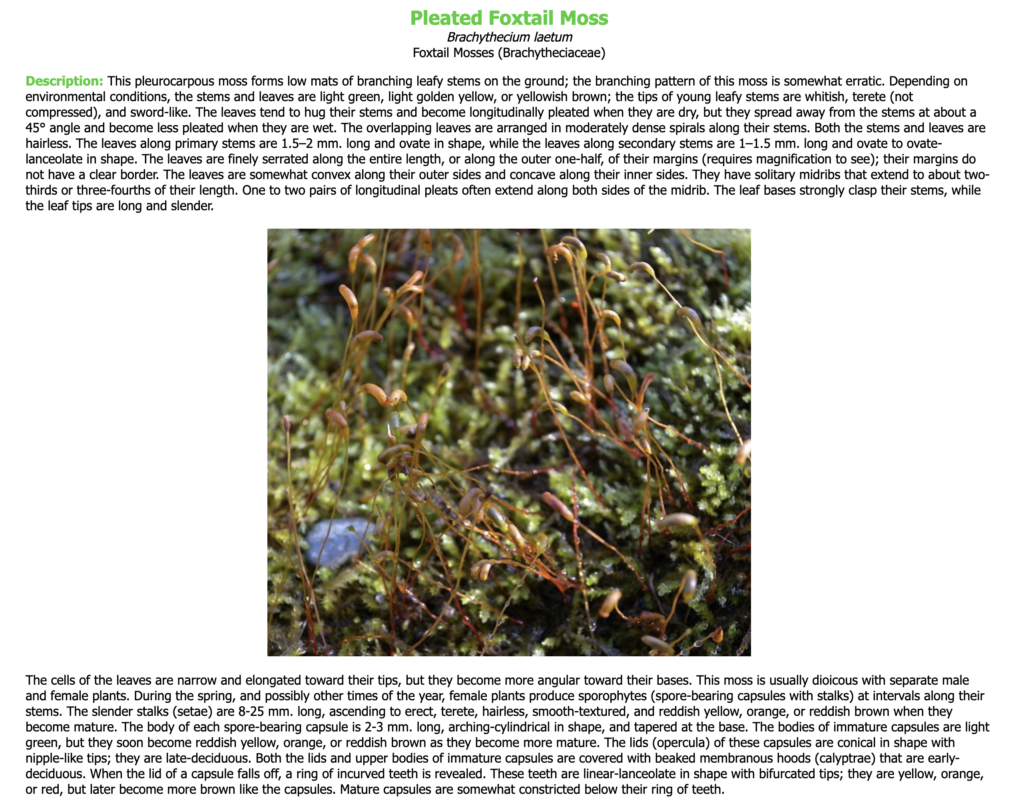
Mosses and Liverworts (Illinois): Another site that I use to help confirm a tentative identification. Again not a comprehensive site but with enough common mosses to be useful.
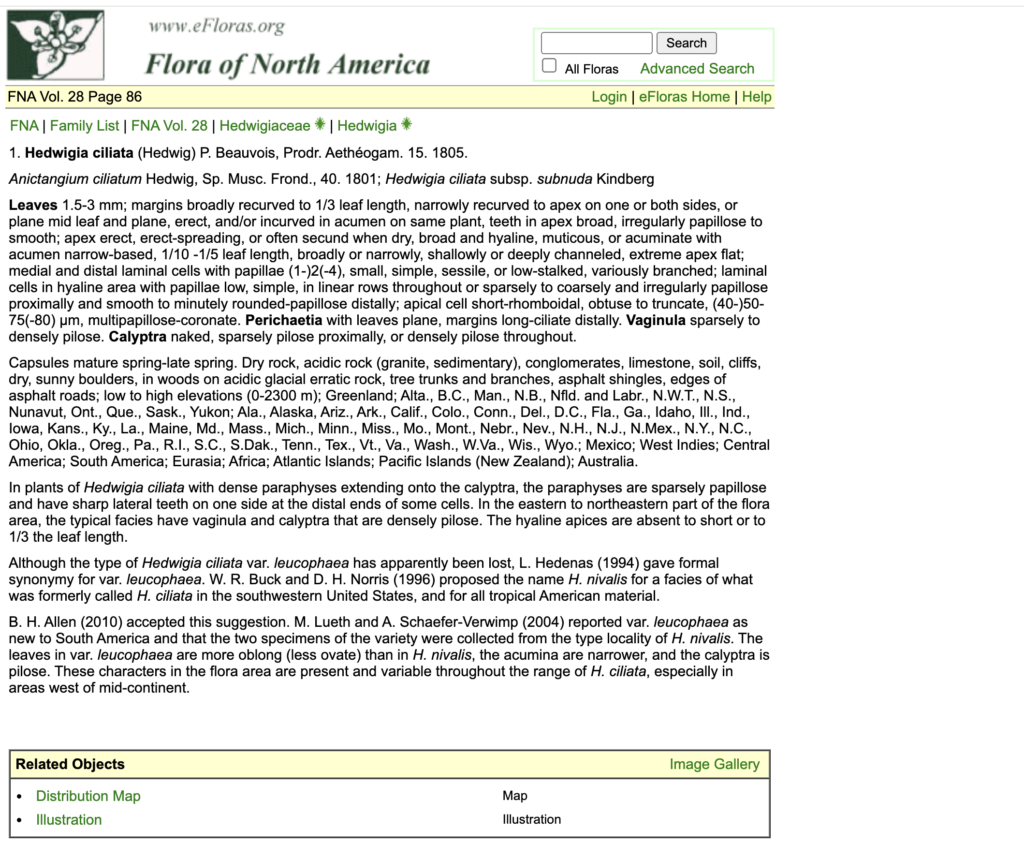
www.eFloras.org, Flora of North America. This is a huge collaborative effort to create technical resources to document the North American Flora. Volume 27 and Volume 28 cover the mosses of North America. These are technical keys and technical descriptions of the mosses. This is where I go to get a final confirmation for a moss. (for me at least, I may still be wrong.) I have the print copies of these books and there may be a few copies out and about for sale but they are fairly costly.

Bryophyte Portal is a Consortium of Herbaria that have made their herbarium data available online. This is georeferenced data and can produce dynamic species lists for mosses that have been collected in your area or even keys to the mosses in your area. I use this resource constantly to get an idea of what mosses I want to look for when I’m out in the field–to limit the number of candidate moss identifications I think I should consider. Remember, these are records of collections. While a great deal of effort over the years has created a very thorough record of our moss flora there is no doubt “undiscovered mosses” and even mosses that have not been described lurking out in the Kansas hinterlands. So don’t take these species lists as the last word. Perhaps the most limited aspect of these records is that the geo-referencing is pretty inconsistent. There are a lot of errors to clean up in the databases but if you go to the actual records you can usually figure out where the actual collecting site was. The records are available through “Symbiota is an open-source software for managing and mobilizing biodiversity data that serves over 1,400 natural history collections and publishes over 70 million occurrence (specimen or observation) records.”
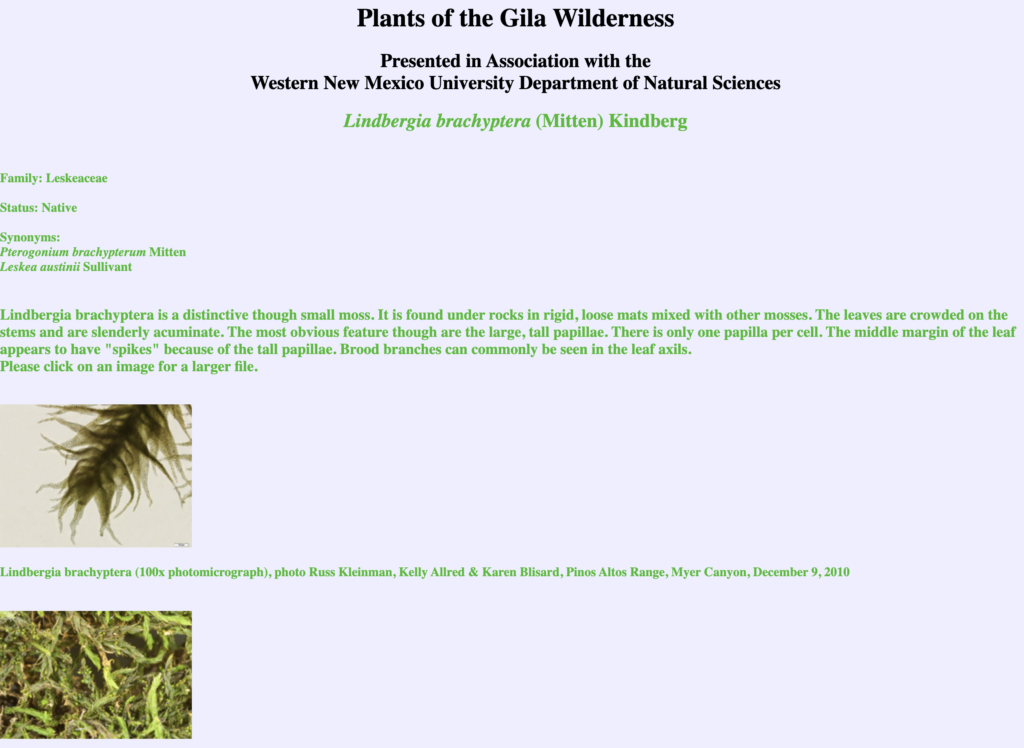
Plants of the Gila Wilderness–Bryophytes. Web pages specific to certain mosses from this website often come up when I search for a moss name such as Hedwigia ciliata. It is a good reference with a lot of micrographs of moss leaves and other distinguishing characteristics. I don’t think I’ve used this site as my primary support of moss identification but I use it all the time to confirm diagnostic characteristics and identifications. Also, while preparing this entry, I found this document that Russ and Karen created to describe their early journey into identifying moss. Good stuff.
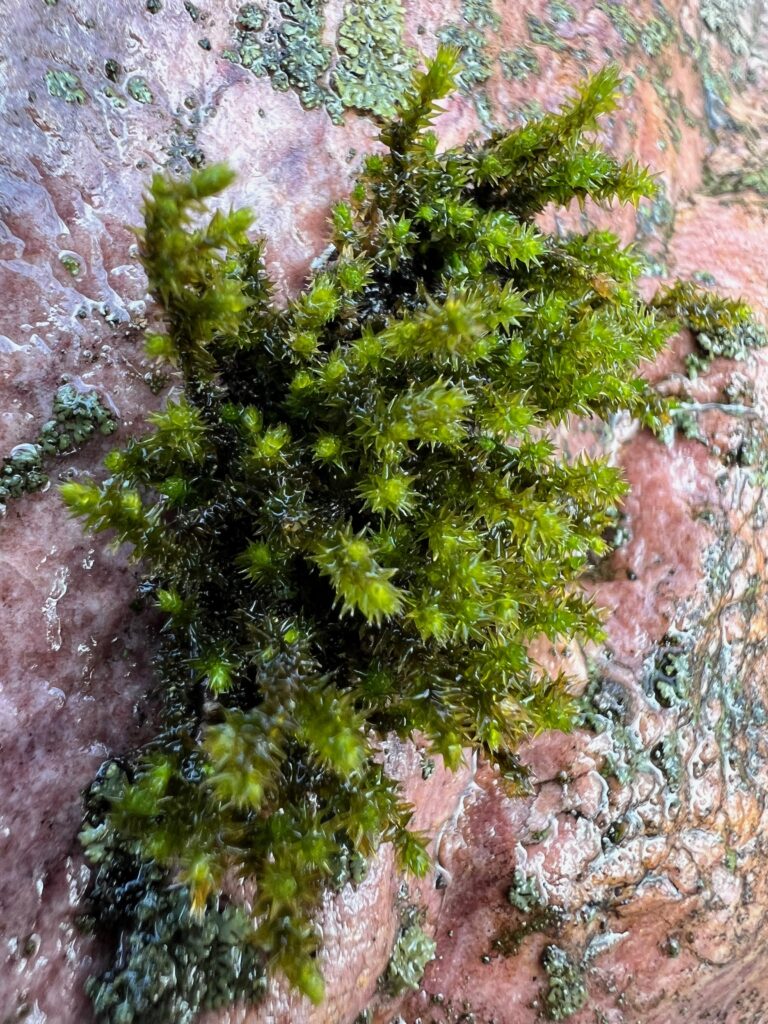
This is a hydrated clump of Hedwigia cilata on a Sioux quartzite glacial erratic from western DG county. And here is a screen shot of the “suggestions” from iNaturalists:
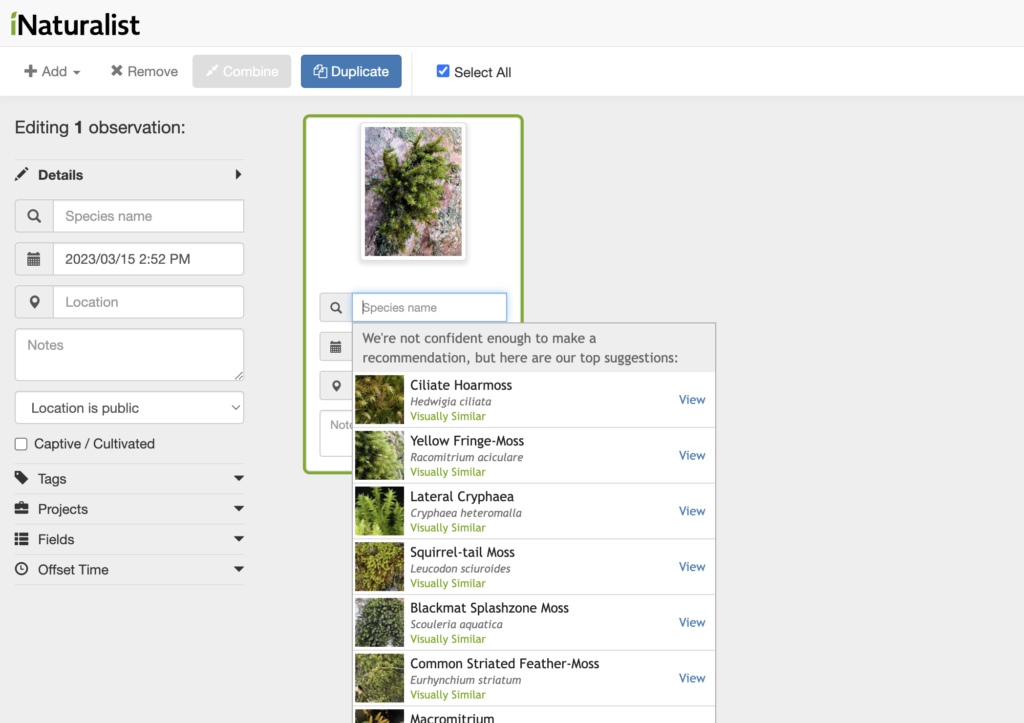
iNaturalist: When I first started on this moss journey about 5 years ago, I tried out the iNat AI identification tool a few times with some mosses that I was pretty sure of. While using the app to identify vascular plants I discovered that it did a pretty good job creating a list of possible plant IDs to consider and sometimes it was right on. An amazing tool. To my disappointment, I found that the app wasn’t good at identifying mosses from simple photographs in the field. Just as the audio side of the Merlin app has made incredible progress in the last three years and is changing audio birding, the ability of the identification algorithms to generate a very reasonable list of candidate mosses for identification has truly advanced in the last couple of years. No doubt this is due to the number of iNat observers who are entering about 100-200 observations per day and the growing expertise of that particular community. Turns out there is even a project on iNat that requires participants to include micrographs with their observations to be included. Until recently, iNat has been a place where I dabble–mostly using it as a database to help me find things I’ve done in the past. It is a pretty good database–already put together and a great place to share your findings with the general public. While putting things together for this workshop, I decided to try the ID app again. I uploaded at least one of the photos from the mosses photographed below into the iNat suggestion box and out of 12 mosses–it only failed to identify one image. Let me qualify that. For most of the images, iNat returned a message that I’m sure most folks overlook: “We are not confident enough…..here are some possible suggestions”. Still, the correct moss was listed in the “suggestions” to consider. Pretty good record, I’d say–it is way more accurate on identification than I was or perhaps I am. ;-). For about half, iNat returned a message that said they were confident to family or to genus, and each time I found that correct along with the correct identification in the suggestions. What did it have a hard time with? The same mosses I have a hard time with and have chosen to ignore for now while I’m learning the more obvious mosses. No surprise, that the app struggles with very small or difficult groups–I imagine the entire community of observers struggles as well. This conundrum gets back to what I find so attractive to studying mosses—I know I’ll always have more to learn. I’m confident enough in iNat at this point to recommend novice bryologists consider coupling it along with the Bryophyte portal’s dynamic species list to use as a first filter–to pare down the 100+ possible KS moss names down to 5 or six to explore deeper.
I’m only going to mention academic papers and books in the field. Some are available online but most are behind paywalls. If you want to immerse yourself in the goings on in the bryophyte nomenclature and phylogenetic community to have the very latest information you’ll need to become familiar with the literature. I, only lightly, wander in these areas, myself. You may or may not wish to peruse these resources.
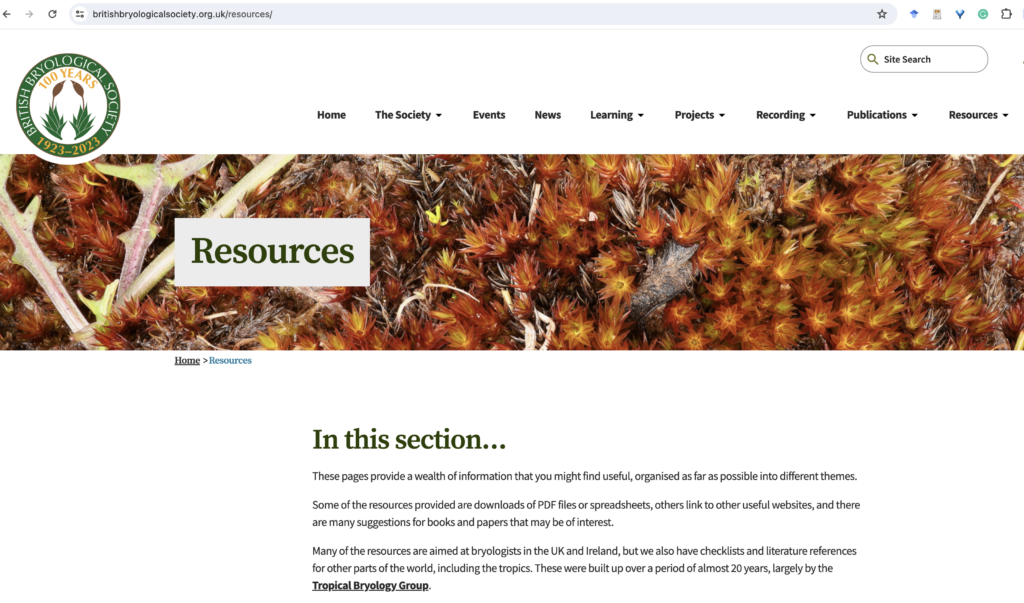
British Bryological Society. I don’t think it is a surprise that there is a long tradition of bryology study in the UK and in Europe–not just by academics but also by highly accomplished enthusiasts. This particular page has a number of helpful ideas for identifying and studying mosses. And it turns out that North America and Northern Europe share a number of moss taxa.
Book Resources:
There is really no “handbook” for Kansas Mosses with the exception of Steven Churchill’s Synopsis of Kansas Mosses which is out of print and maybe not the best key to start with for beginners. The books pictured here are most focused on common mosses of the Northeastern U.S. But it turns out that many of the mosses in KS are covered in these books as well. Gathering Moss by Robin Kimmerer is a must-read for moss lovers. Consider pairing it with The Northern Forest Atlas Digital Atlas of Mosses by Jerry Jenkins. The digital atlas can serve to illustrate and help you connect to the mosses featured in each of Dr. Kimmerer’s chapters.
I probably use the Princeton Guide to Common Mosses of the Northeast and Appalachians more than the others. It has a pretty nice graphical key that tends to get me in the right place in a hurry and the species accounts always include suggestions for similar mosses. One of the hardest thing about learning new species representing a new group of organisms like mosses is that you don’t know enough to make comparisons–you don’t know what you don’t know. That comes with experience but it is a challenge.
The big green volumes represent a long-time effort to document the moss Flora of North America. These are technical keys and if you are up for the challenge will provide a wealth of information about almost any moss you find in Kansas. This resource is freely available online and is mentioned earlier.
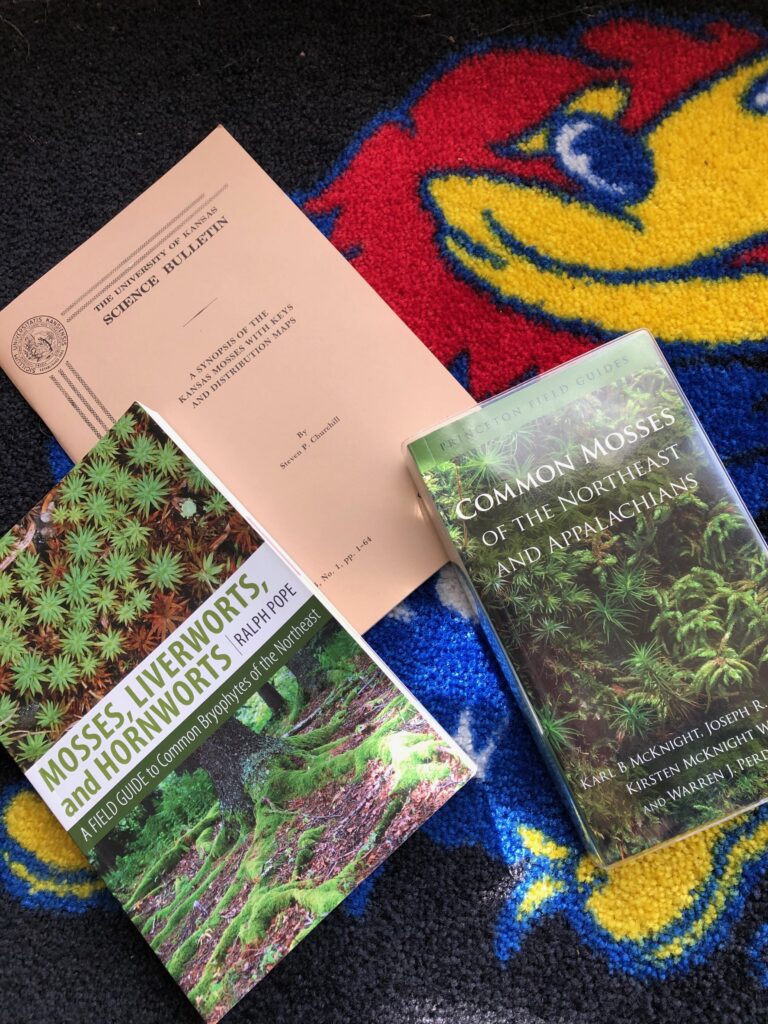
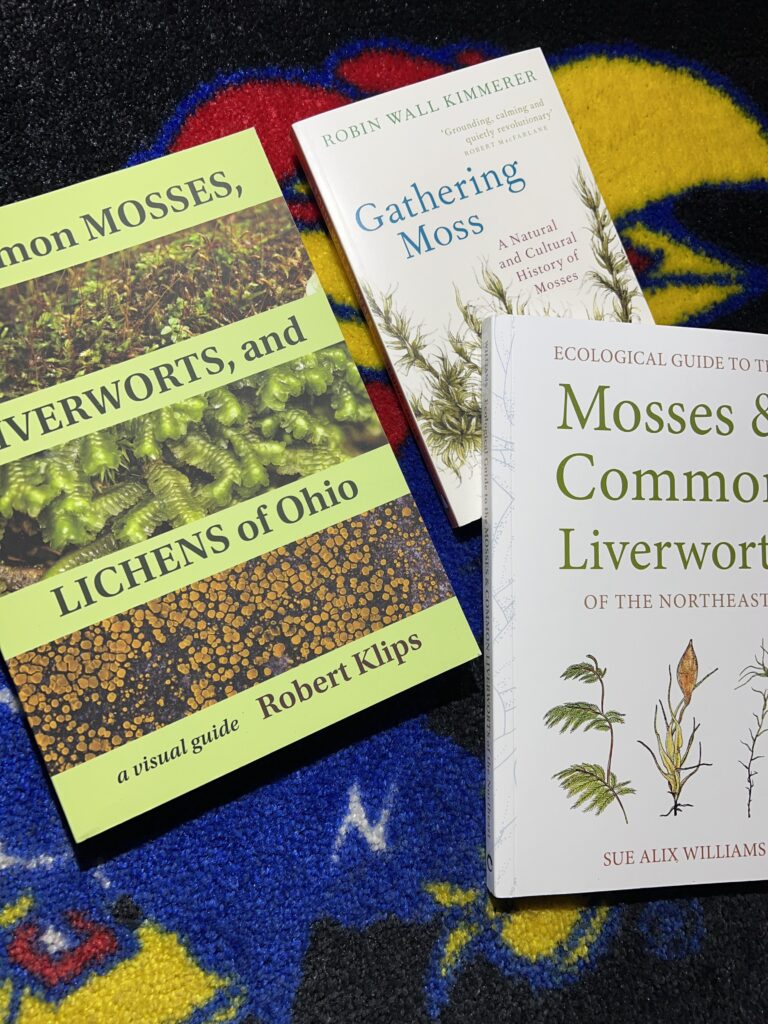
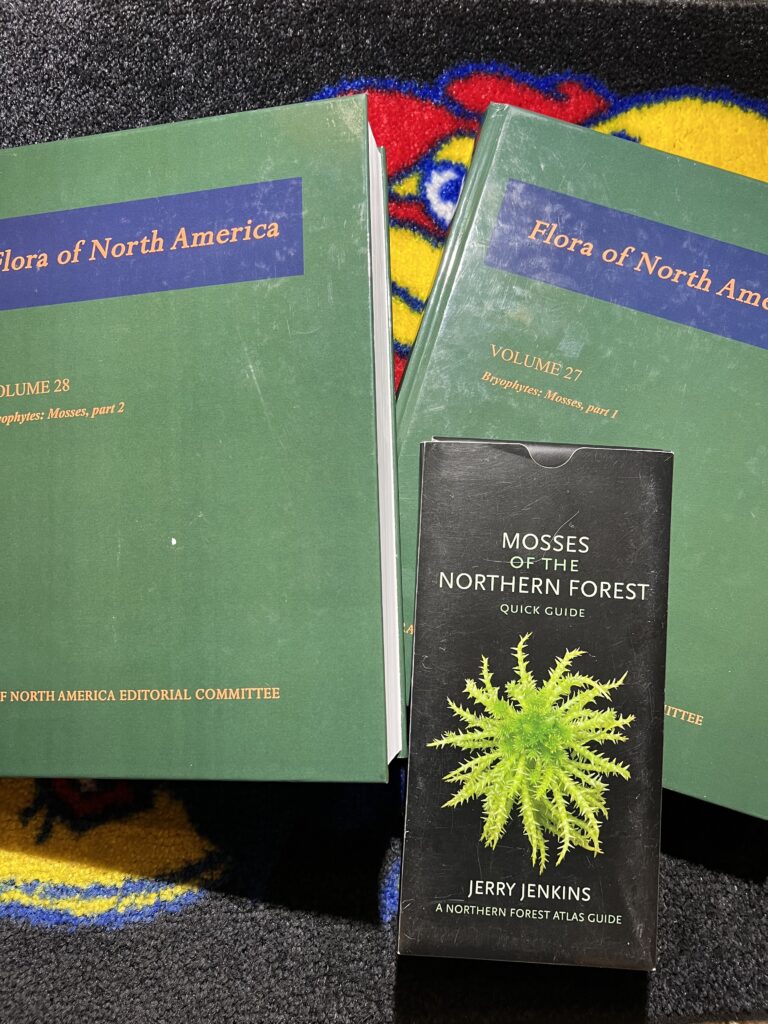

Workshop Habitat Context Slides
The following images are to help provide a bit of moss context to the specimens collected for the workshop. The context is really important when trying to identify mosses and to reveal moss stories. Each specimen (or in a couple of cases, a pair of specimens) has 2-4 photos that attempt to capture the overall environment that which the moss is found, a closer approach, and finally a close-up. These photos hopefully, will help you fill in some context for each moss–to find answers for some of the questions you are putting to your moss.
Moss 1: Growing along a soggy woodland trail, mostly in “bare” soil areas where leaves don’t accumulate
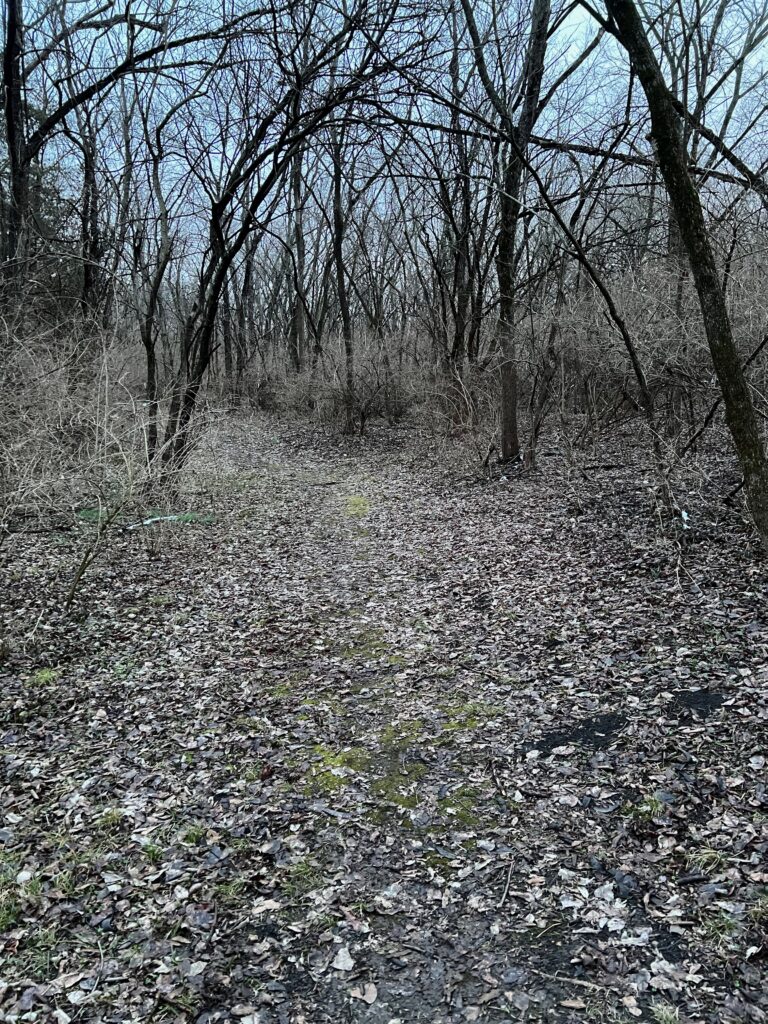
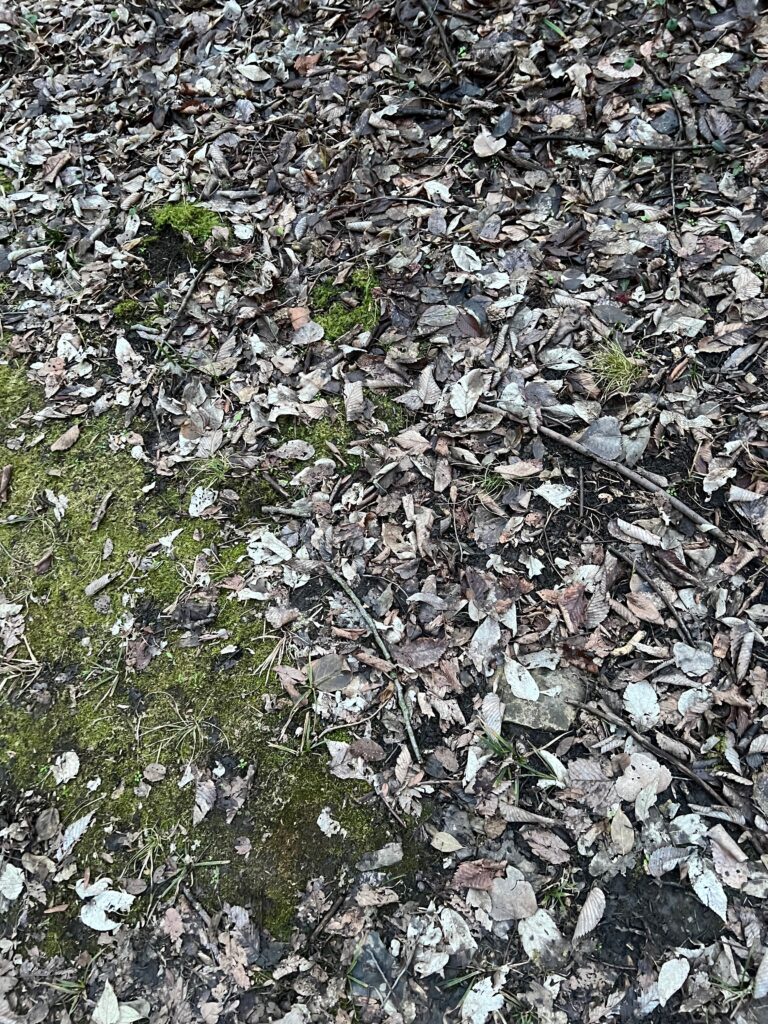
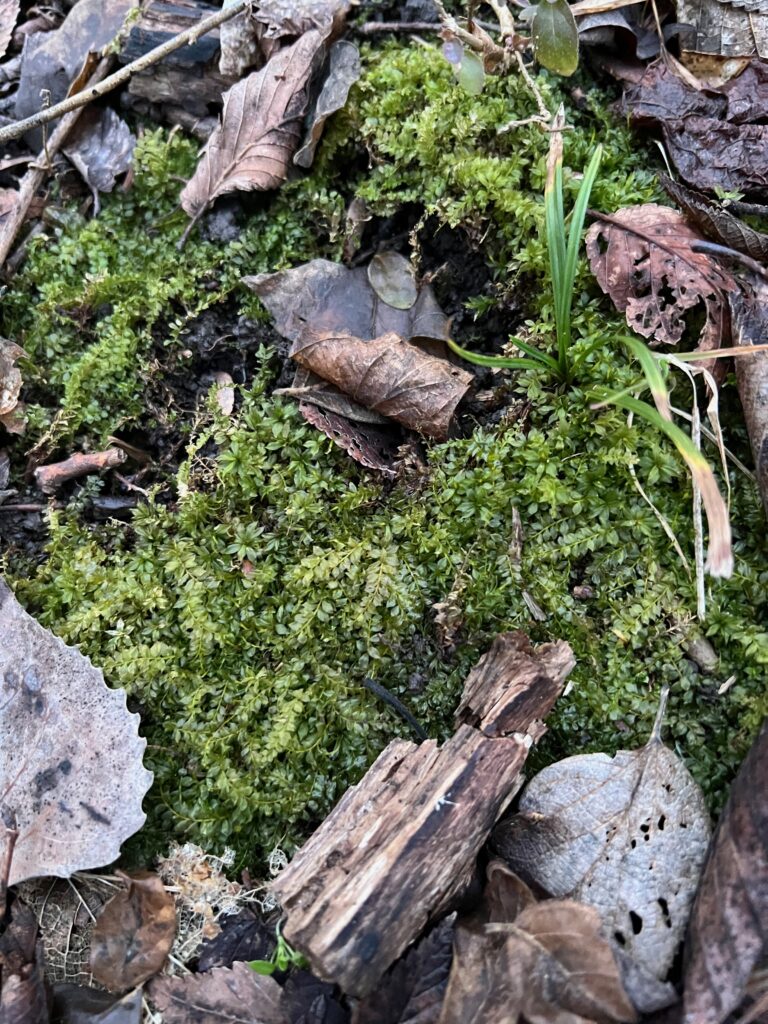
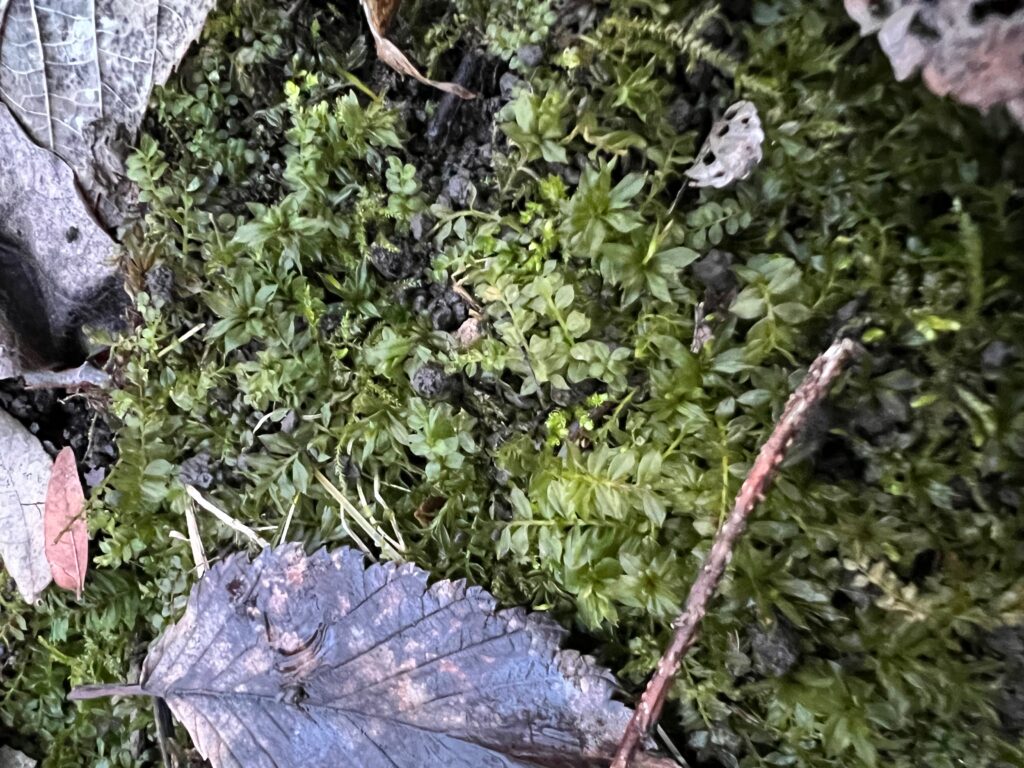
Moss 2: The north side of Dillon’s at 6th and Wakarusa in Lawrence on a rainy/slushy day.
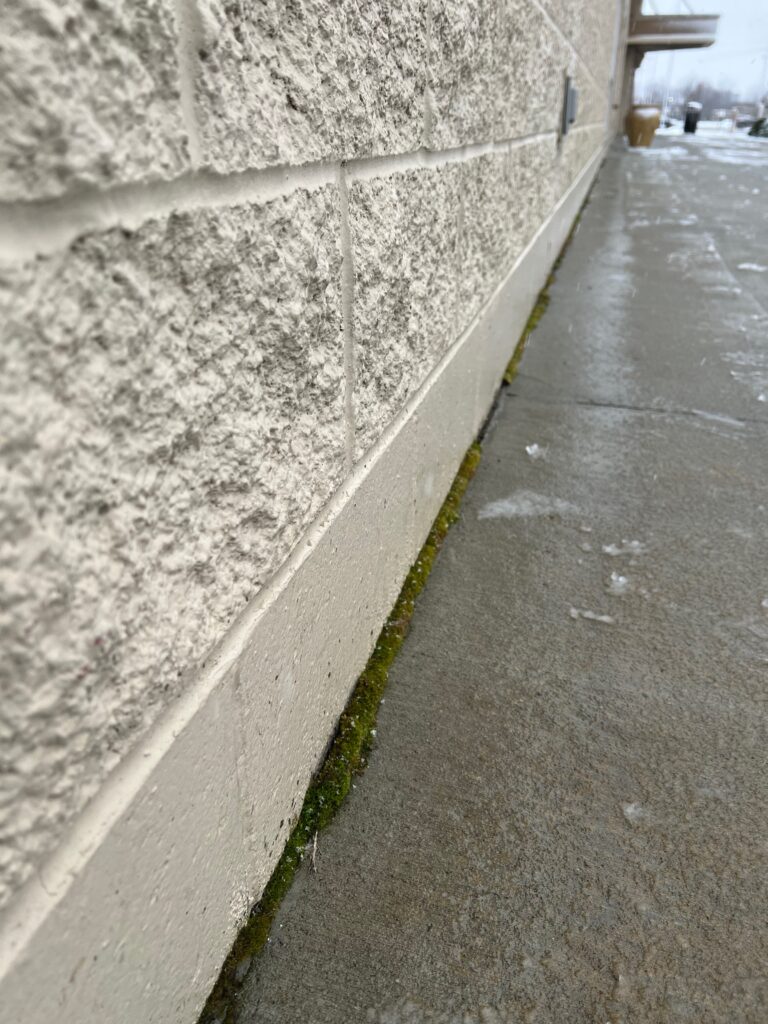
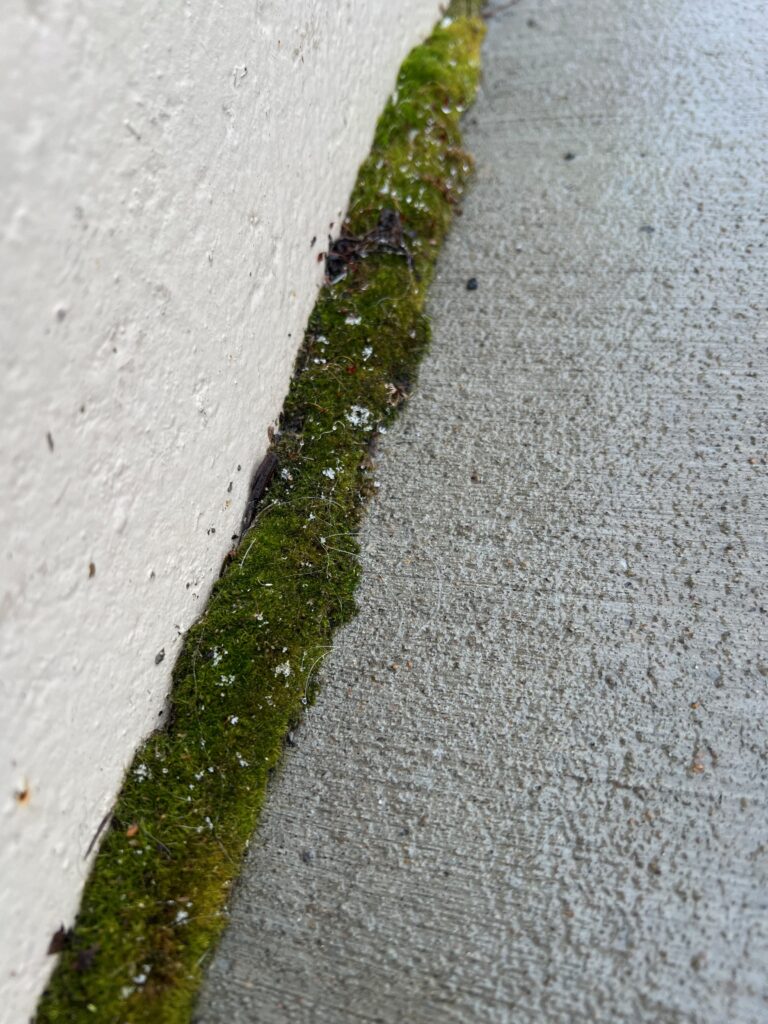
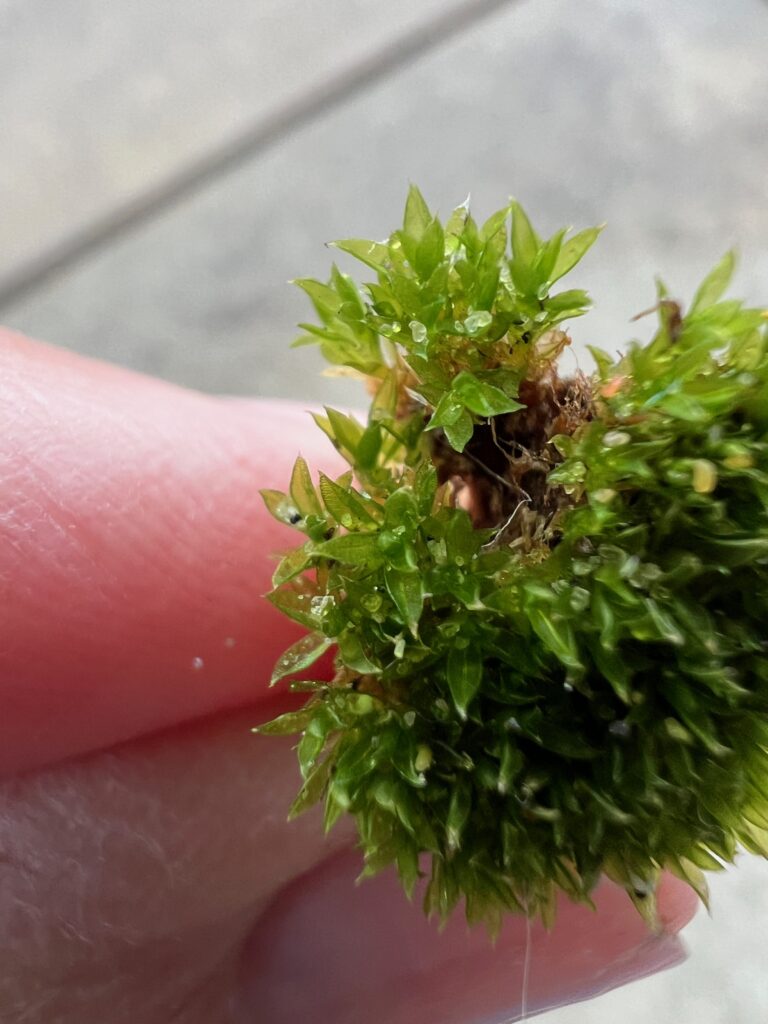
Moss 3 and 4: A honey locust that is in a lawn that has a sprinkler system going during the summer. The images (and mosses) were collected about 6 feet off the ground.
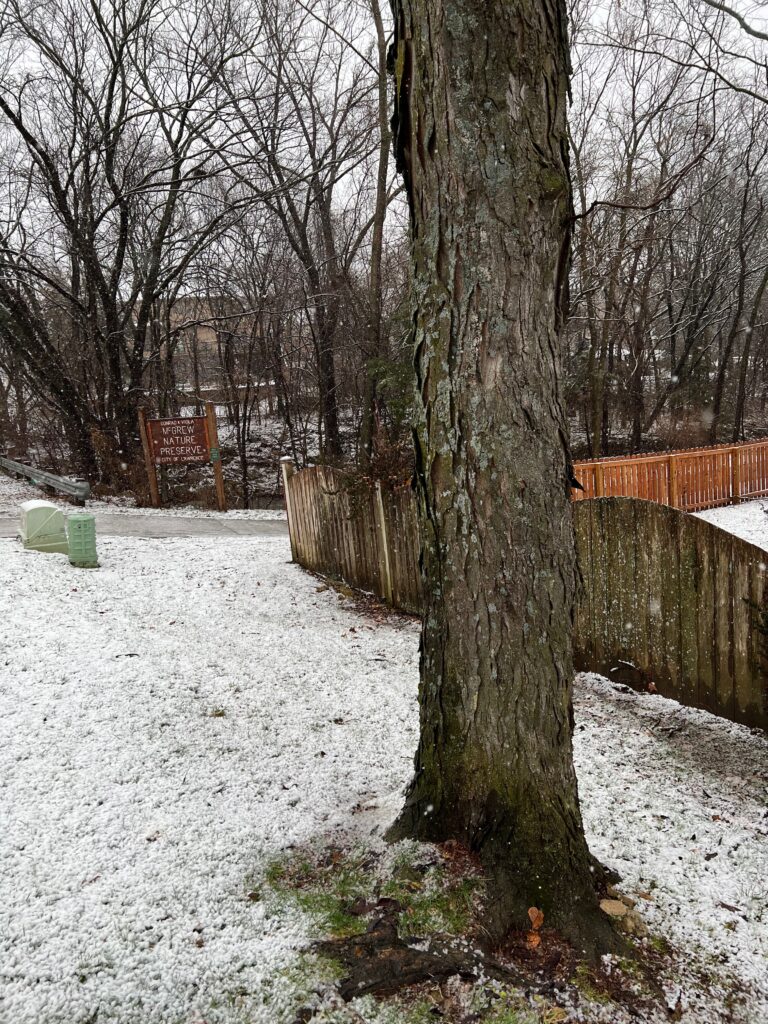
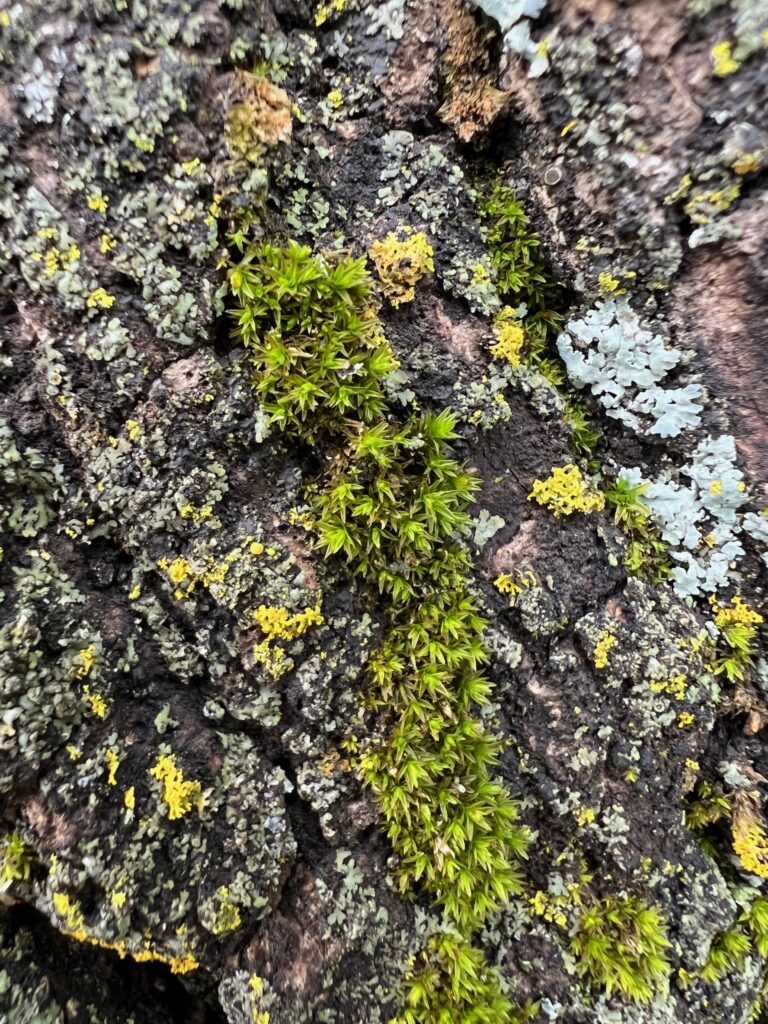
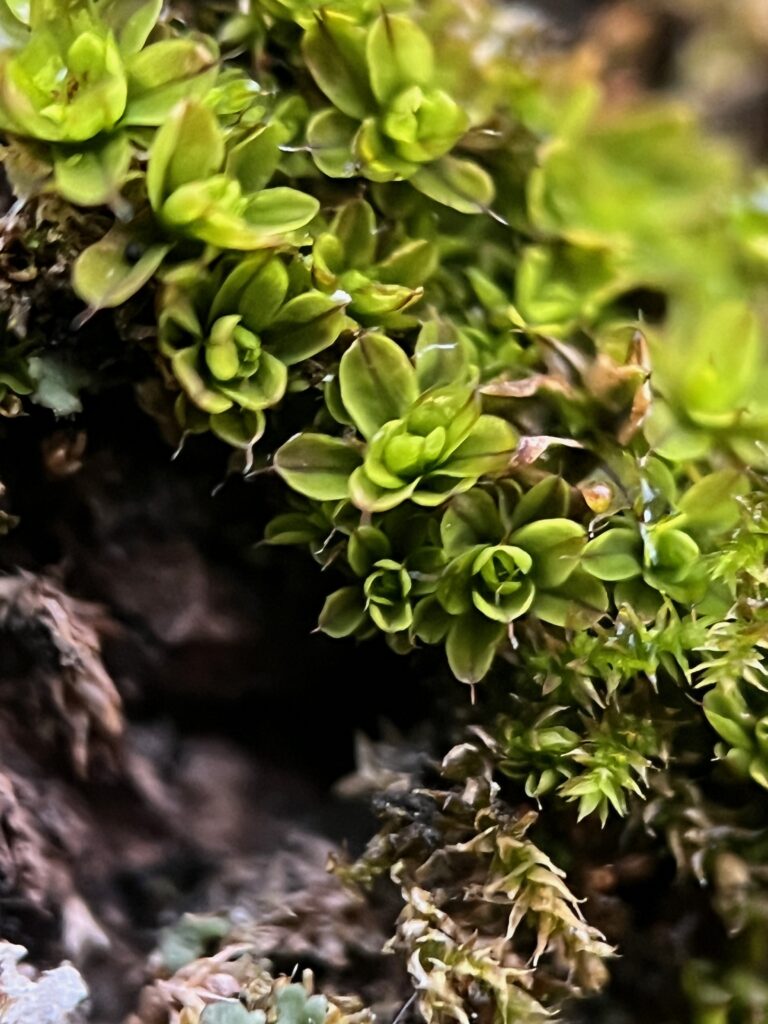
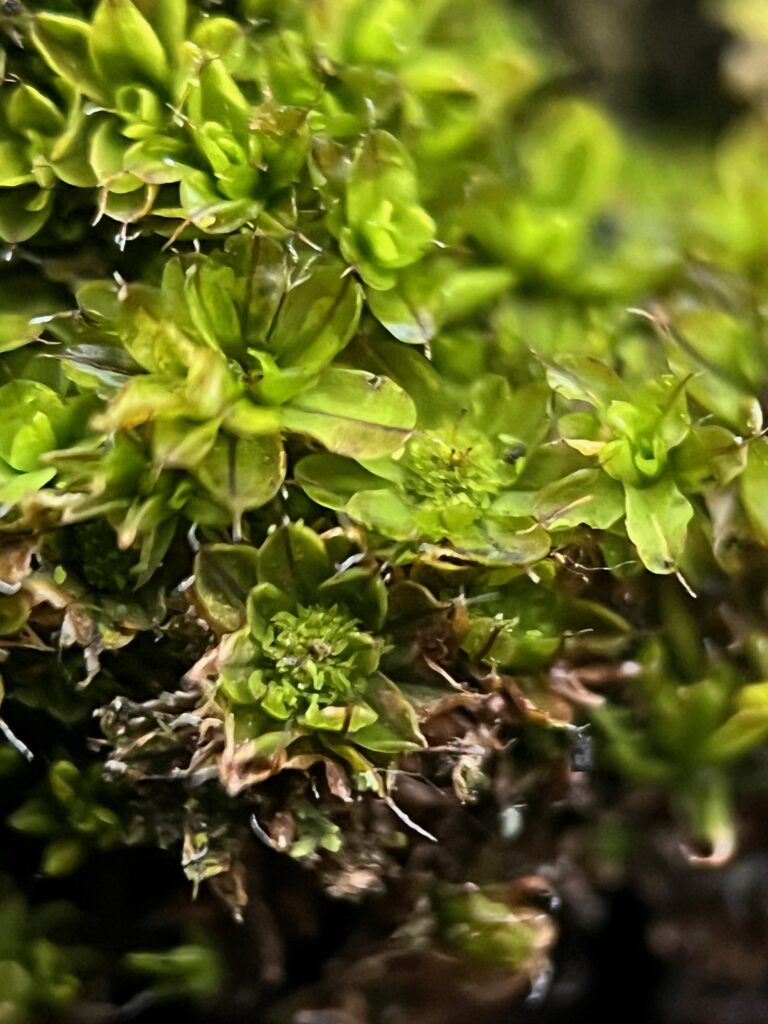
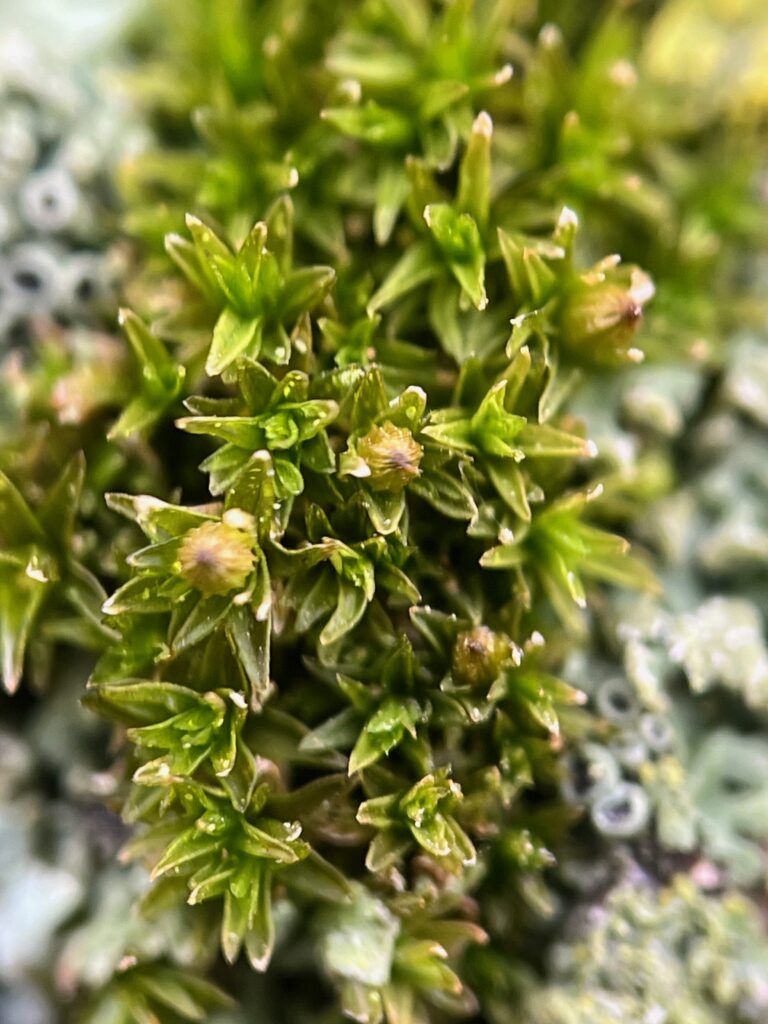
Moss 5: Decortified (bark is gone) Walnut down in a humid ravine with an intermittent stream nearby. There’s another log in the background with the same moss. There are at least three mosses on this log but we are paying attention to the finer, thin covering of moss that has color from green to gold
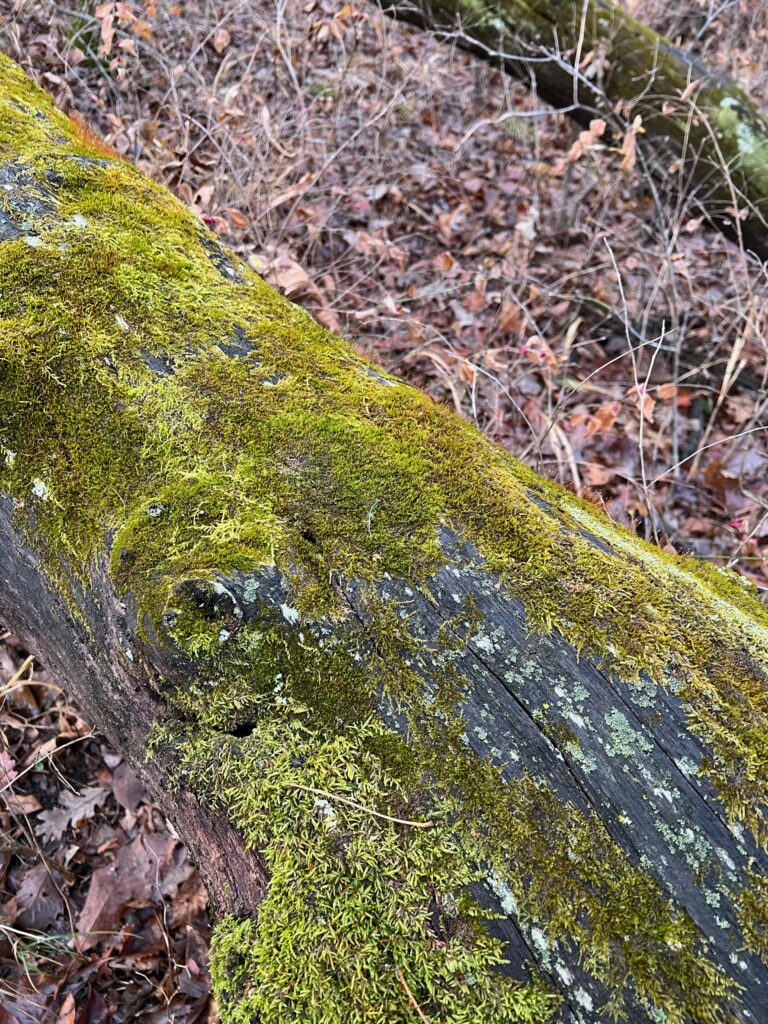
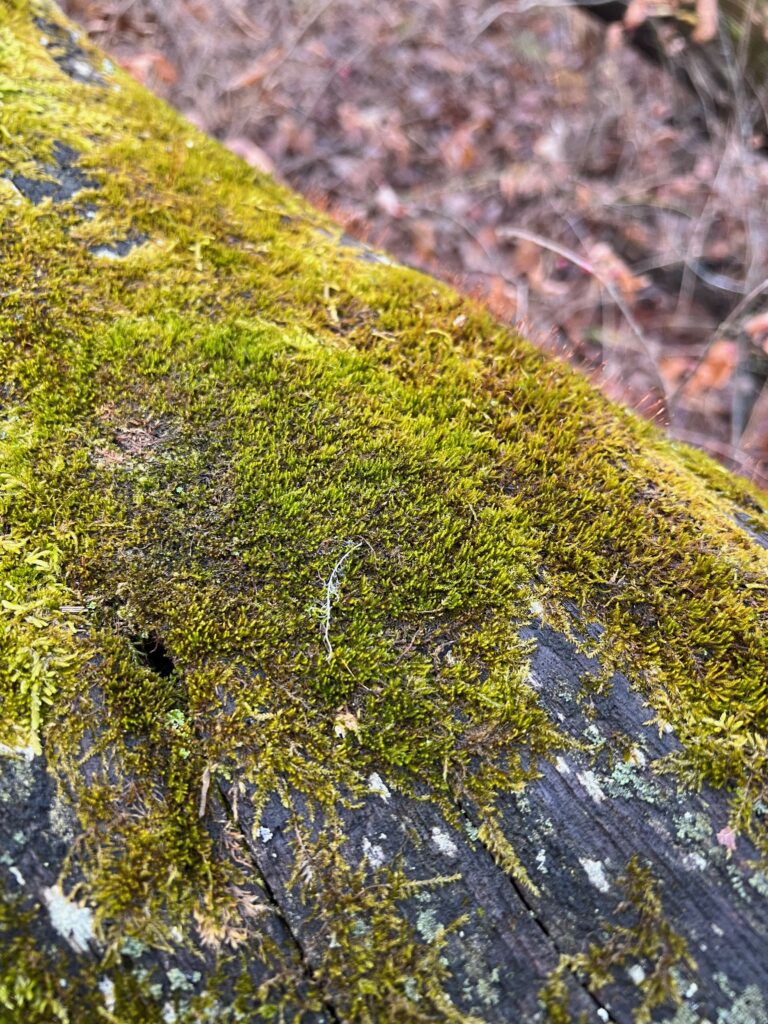
Moss 6: Not all that looks like moss is a moss: Take a close look. Growing on trees down near the intermittent stream/
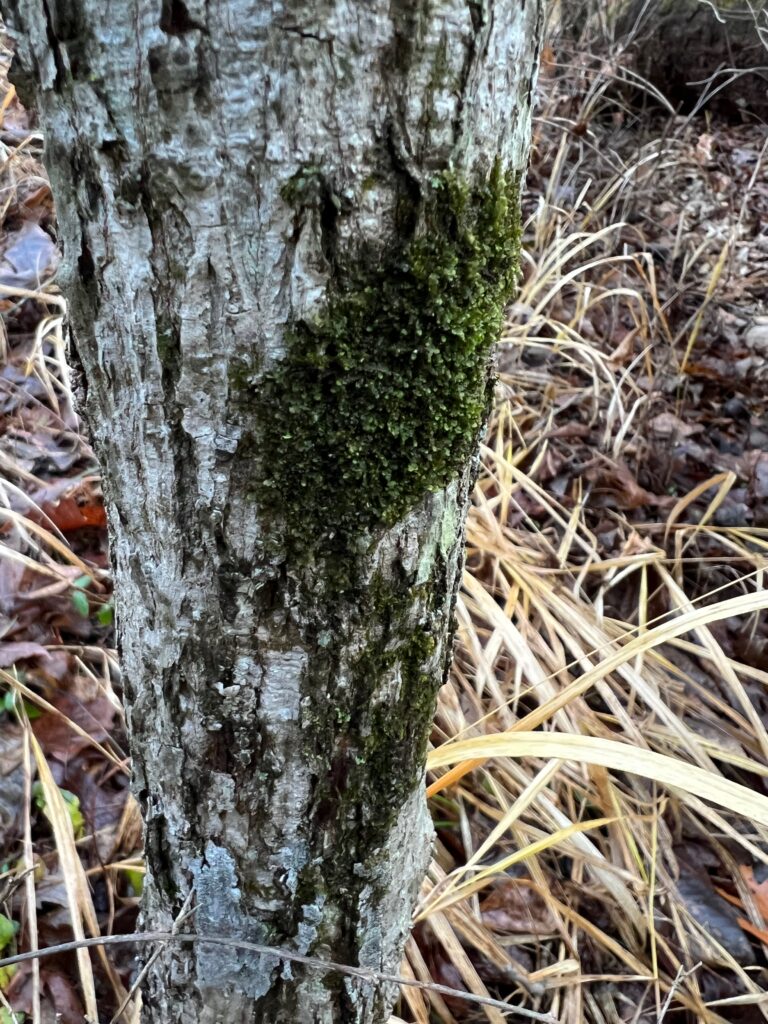
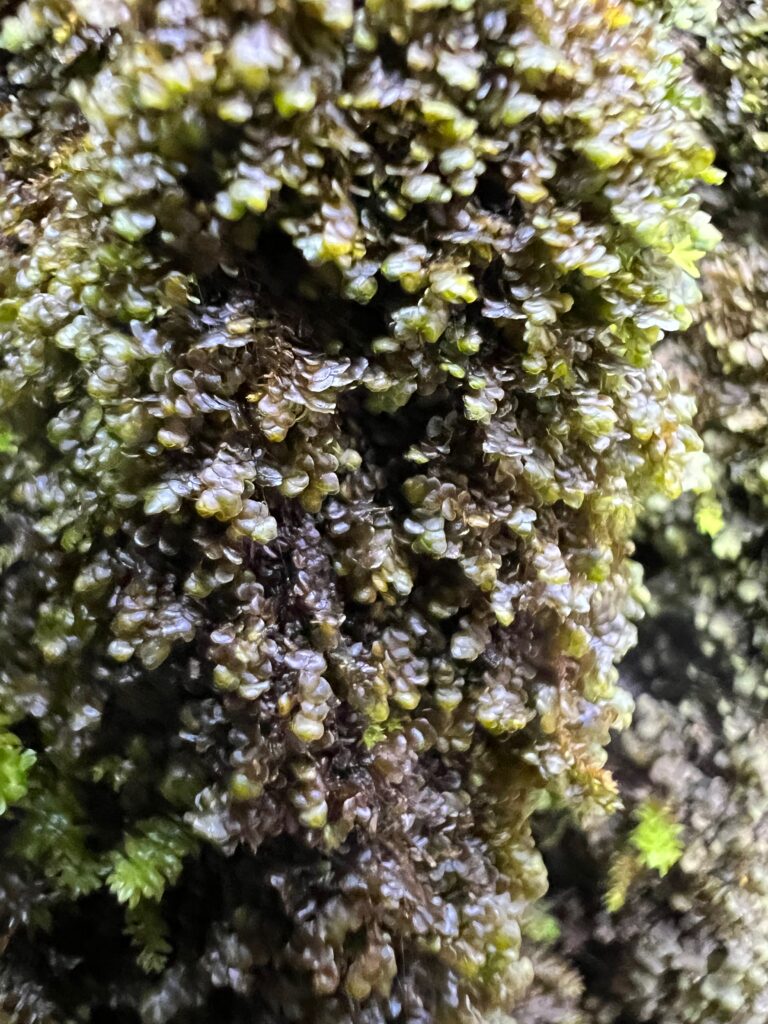
Moss 7 and 8: Two mosses growing together. Found on the crest of a hill above Clinton Reservoir along the shallow soil of emerging limestone outcrops.
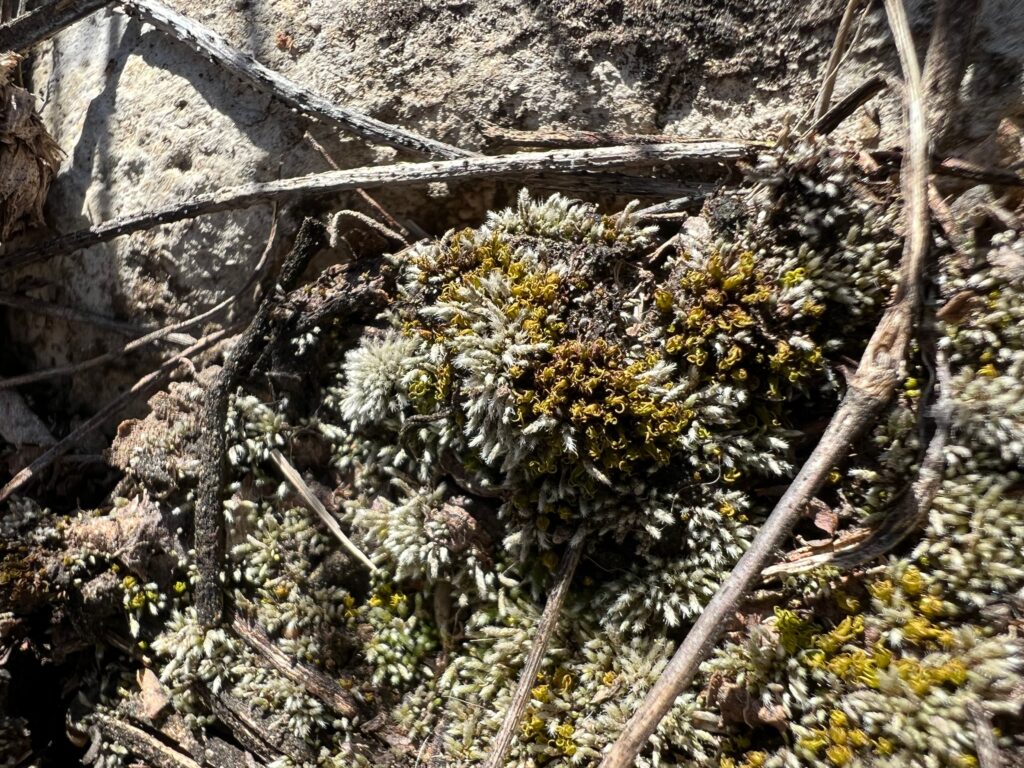
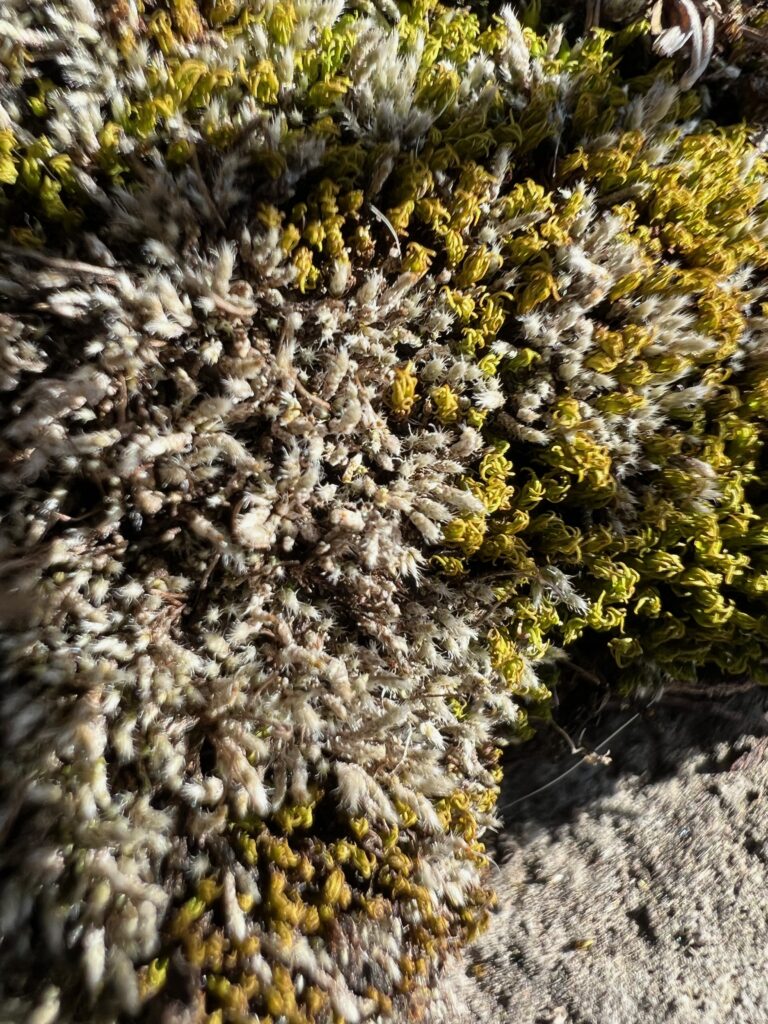
Moss 9: Growing on the base of a north-facing tree and on the nearby limestone outcrop. Rainy day.
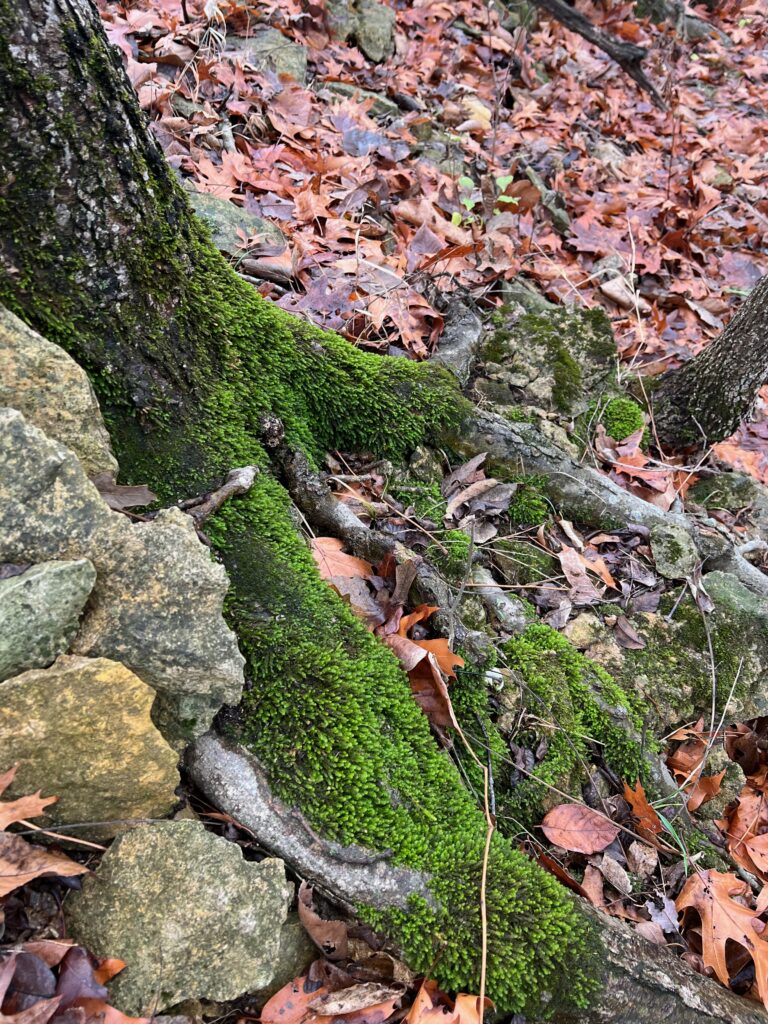

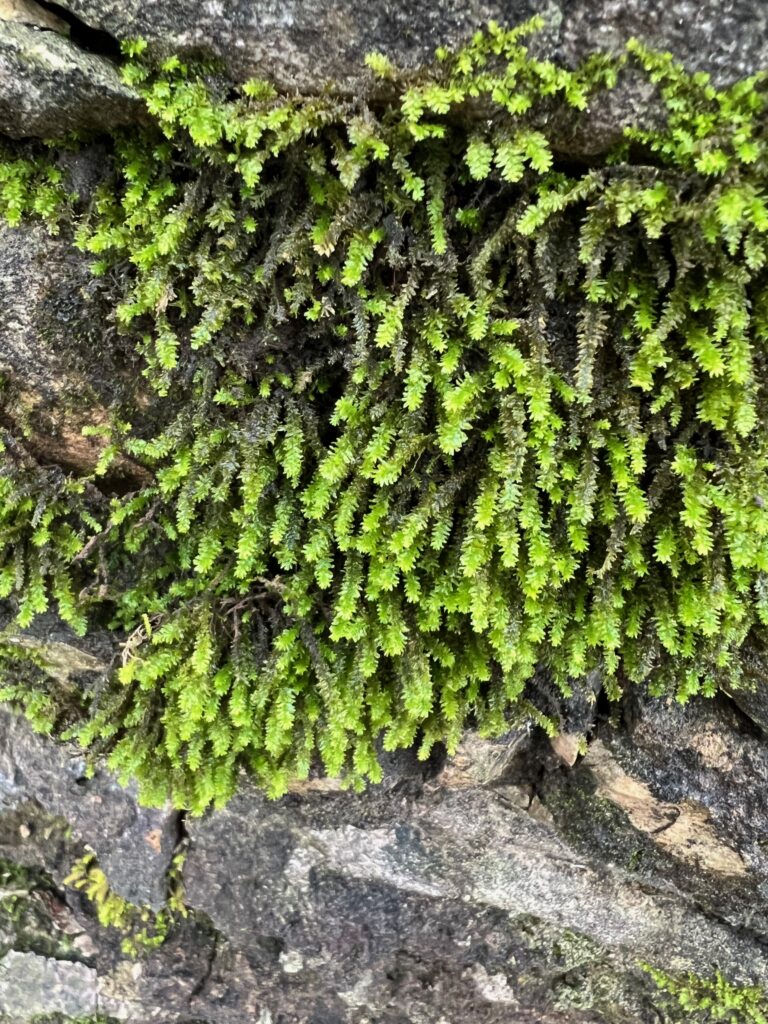
Moss 10: Another couple of mosses growing on a decortified log. We are focusing on the larger, light green moss.
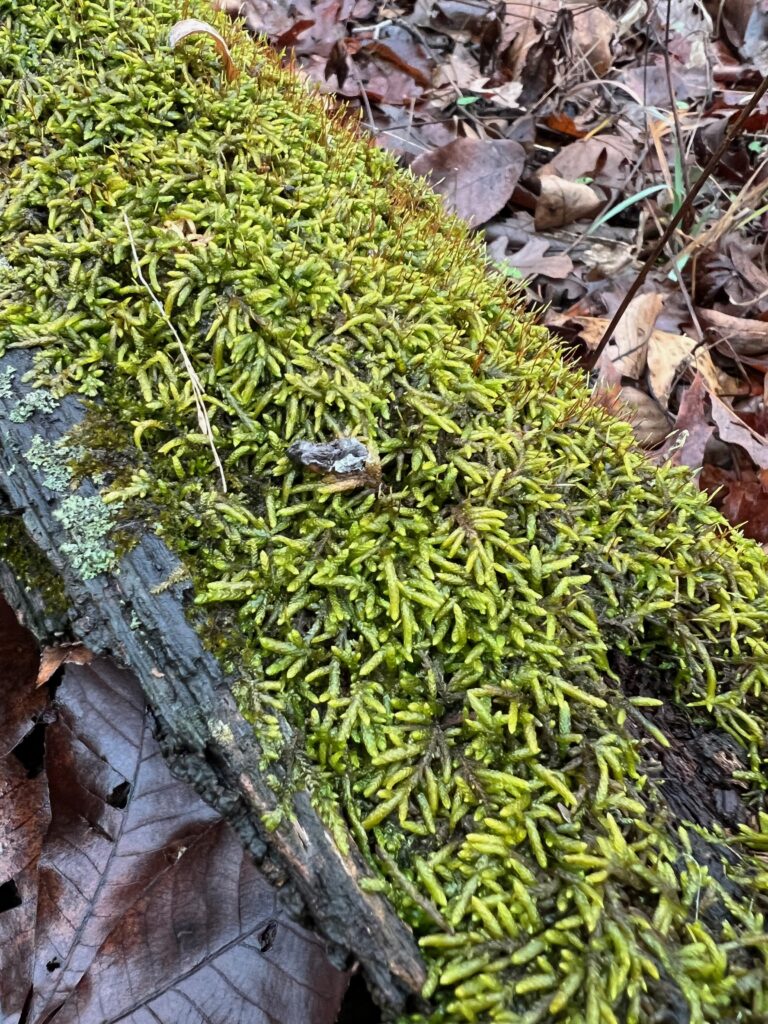
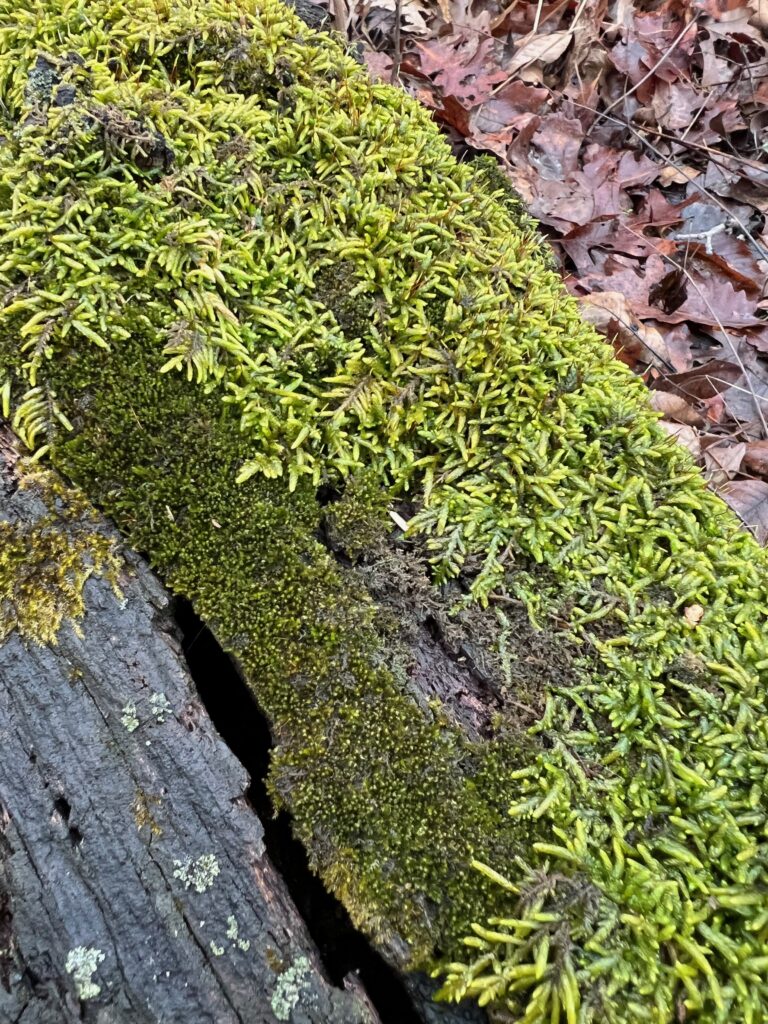
Moss 11: Rainy day, not much light left, rock along a rocky slope and a heavily used trail. Moss is growing both on the rock and on the soil next to the rock
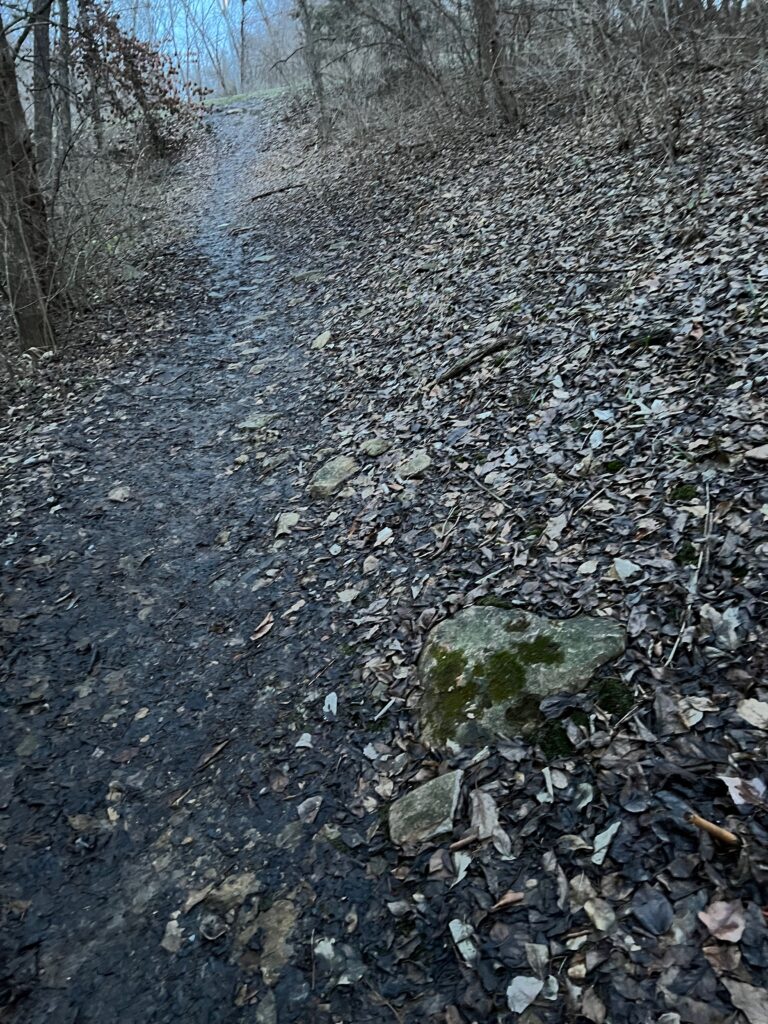
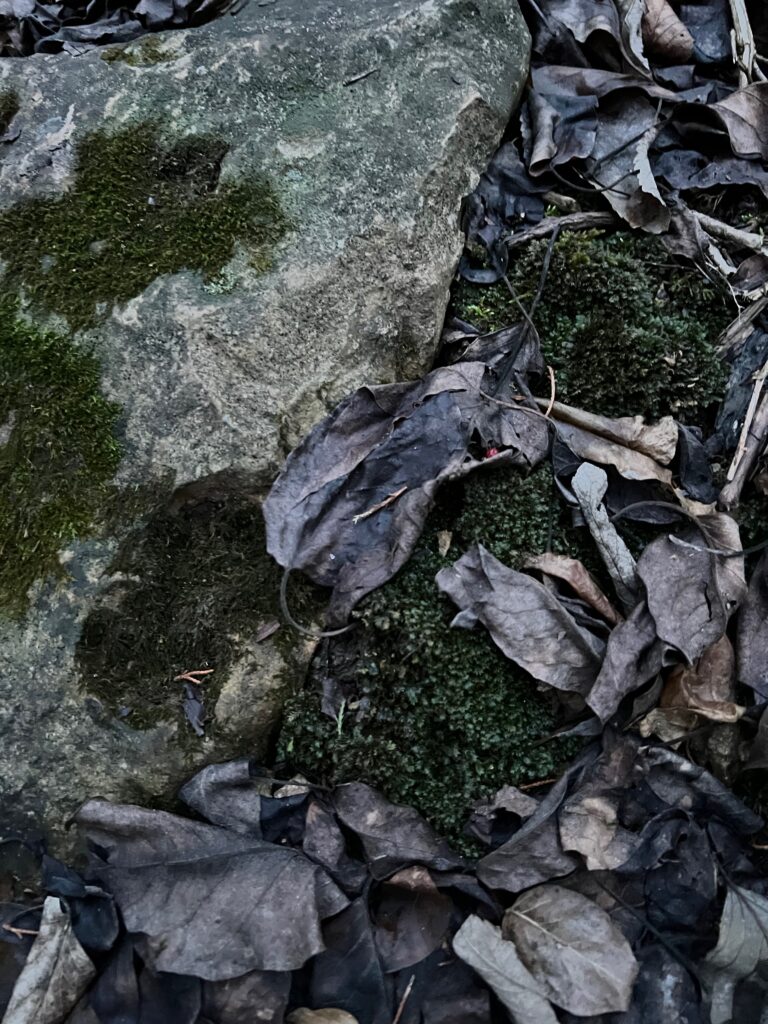
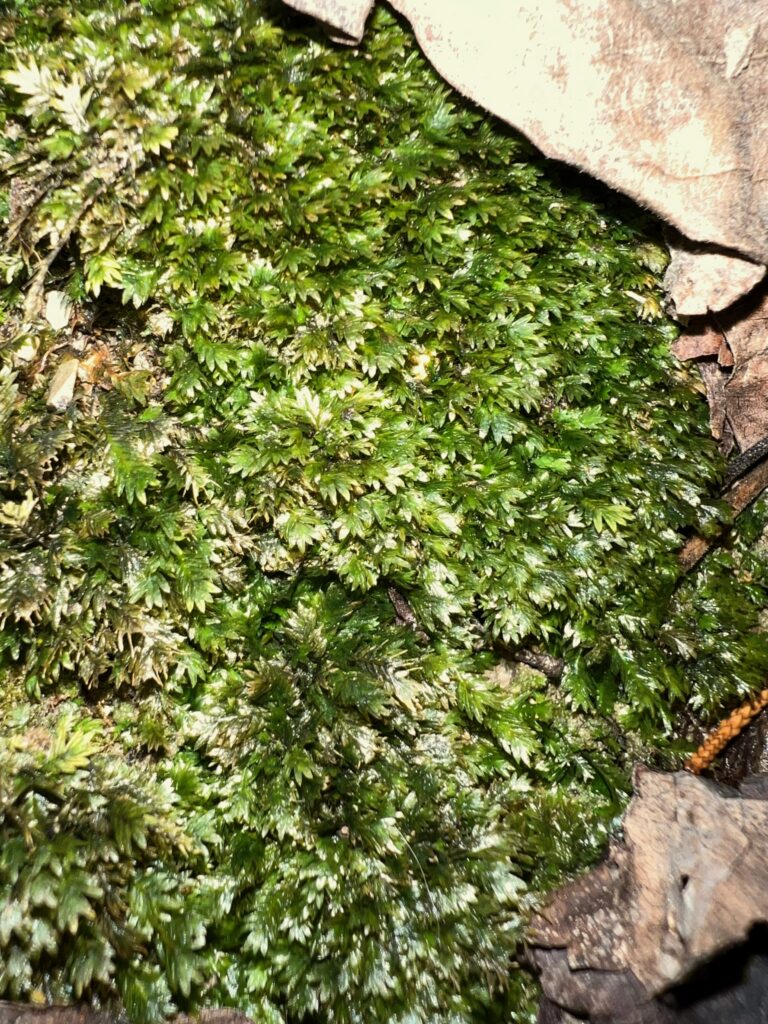
Moss 12. Growing along side some more of moss 9
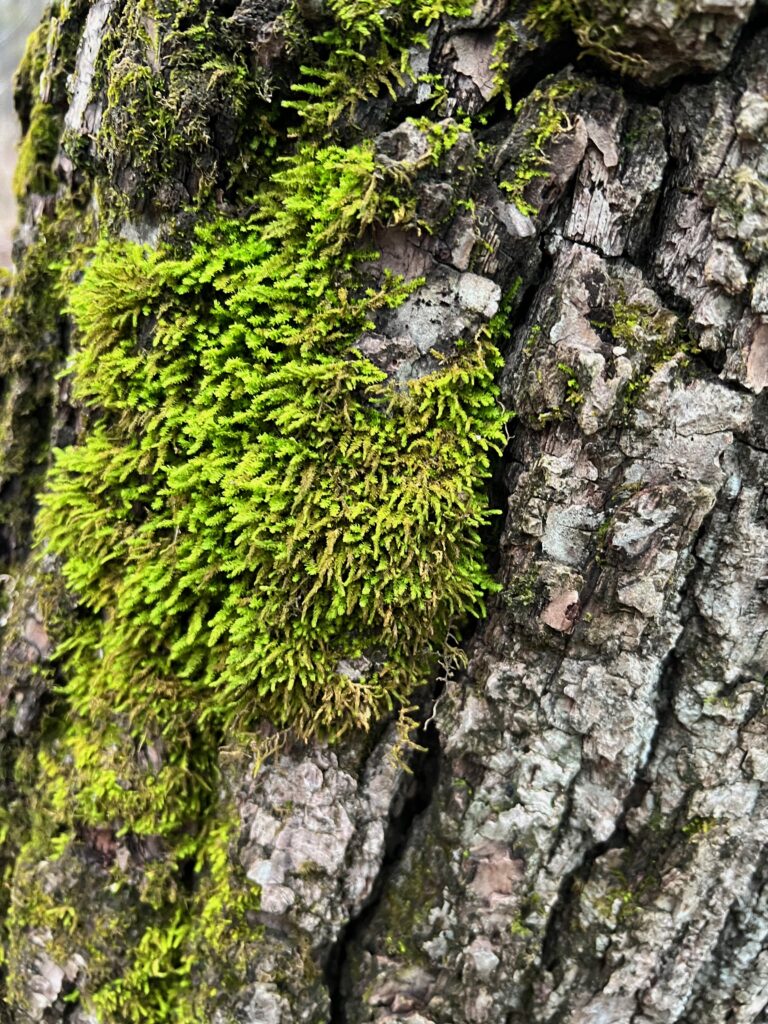

Moss 13
